What's Under the Umbrella?
o Remembering Vera Lousie Morton & Marion Casson
o QAC Celebrating Everyone Under the Rainbow


o Are tattoos art?

2022 Vol. 31 No. 2 Visual
Performance I Literary I Heritage
Education
Summer
I
I
Janet Jarrell, Executive Director janet@quinteartscouncil.org
Heather Christiansen, Program Director heather@quinteartscouncil.org
Kodie Trahan-Guay, Communications and Media Director kodie@quinteartscouncil.org
Lin Parkin, Editorial and Content Director lin@quinteartscouncil.org
Andrew Gray, Graphic Designer drewgraymatters@gmail.com
Kim Lidstone, Bookkeeper qac@quinteartscouncil.org
The Quinte Arts Council is a not-for-profit, charitable organization, registration number 107869448 RR 0001. Publications mail agreement number 40667523. Published by: The Quinte Arts Council, P.O. Box 22113 Belleville, Ont. K8N 2Z5 Printed by: Willow Publishing



Material may be reprinted only with permission. Umbrella is mailed to members and delivered to distribution points throughout the Quinte region. The information contained within is believed to be reliable, but accuracy cannot be guaranteed. We do not assume responsibility for any errors and/or omissions related to submitted content.

With excitement, we are riding the waves in the ebb and flow of reopening. We went from frozen, slow progress, small steps forward – to waiting at the starting line – and GO!
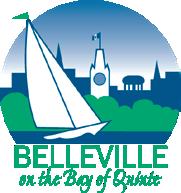
Calling it The Great Return, the world is open - workers are back in office, travellers have booked and are on their way, galleries are open, performances are happening, bands are back together! There is so much art and culture happening you can feel it and breathe it in just by going outside.
We are certainly feeling the energy here as we welcome to the team Kodie Trahan-Guay. A recent graduate of York University with a degree in Communications, and a background in broadcast journalism and public relations, Kodie is shaking things up in the office. Kodie is spearheading our new podcast Makin’ Stuff Up, where we interview local artists about their discipline, get serious about passion for arts and culture, and not so serious too – it is work, fun work. Welcome aboard!
Umbrella is also riding some waves as we continue to celebrate the arts in Quinte. We appreciate all the positive feedback we get from this publication and were thrilled to hear that Loyalist College students were reading it and creating documentaries on the local artists featured in the magazine! So thrilled, we dedicated an evening (our first in-person event in a long time) to showcasing the documentaries on the big screen at Theatre in the Wings. What a great way to connect with these new generation filmmakers.
This issue is dedicated in memory of Vera Louise Morton
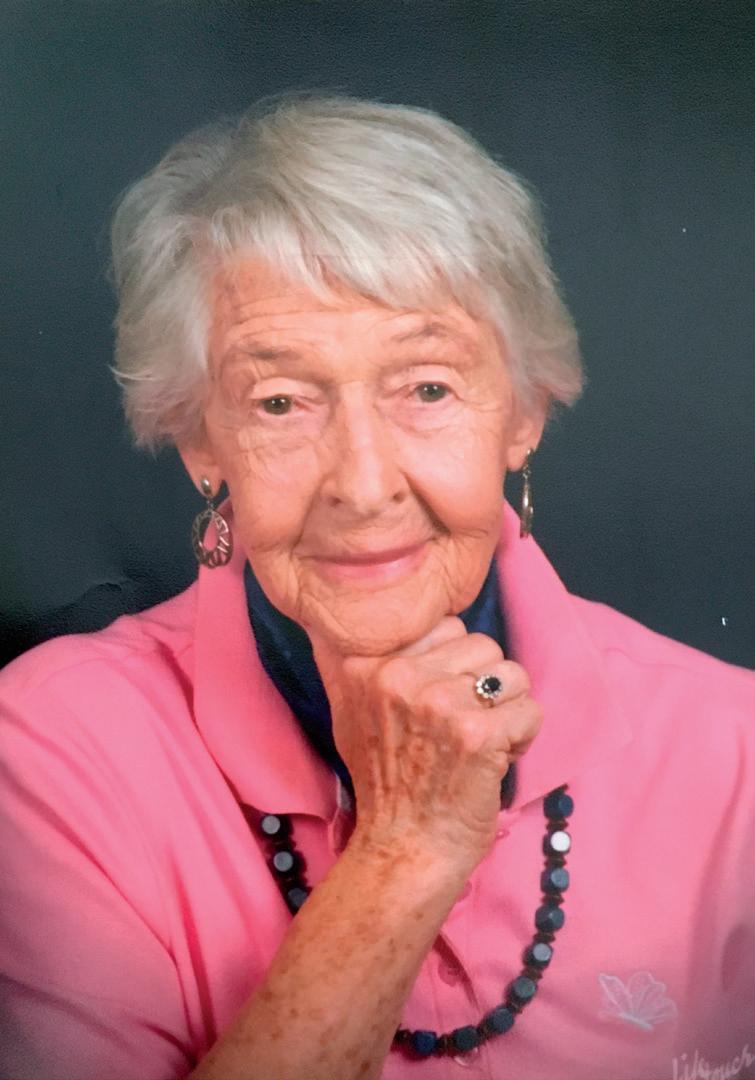
February 03, 1926 — May 09, 2022

We are looking back at history realizing that many generations to come will be talking about this pandemic we all lived through. Through it, some artists needed a break, some worked harder than ever, and some took up a new form of art altogether.
Comedy has certainly helped get us through the past two years, and music too. Writers in residence return to the Al Purdy A-Frame, the first annual Belleville Jazz Festival is happening this fall, and tattoos – well, everyone is getting them! This issue looks at how community bands are making it work, the making of wild and beautiful wire sculptures and a look back at silversmith guilds.
The QAC continues to celebrate those who have made a significant contribution to the arts community; please consider nominating a worthy recipient. As we work to advance arts and culture, we recognize the importance of inclusivity in our work every day. We remember those who left us during this time. Fibre artist and painter, Marion Casson is remembered as adventurous, creative and influential – and she is remembered here in the pages of the magazine you are holding (p.20). Furthermore, we remember Vera Morton. A long-time member, donor, volunteer, Director; she wore many hats, the most important of which is a friend. The community remembers you both with fondness and admiration.
QAC programs are funded in part by:
Cover: Sean Ferguson Back: Mark Hopper
PARROTT FOUNDATION
John M. & Bernice
MESSAGE FROM EXECUTIVE DIRECTOR
Table of Contents
2021 Arts Recognition Awards, Belleville
Photography
Sean Ferguson, Prince Edward County
Fine Arts

Iris Casey, Stonedragon Studio, Prince Edward County
Paulette Kinmond, Quinte West
The Art of the Tattoo, Belleville / Quinte West
Film
Celebrating Loyalist College student documentaries with "Docs, Dinner & Drinks", Belleville
Crafts
Erin Thomas on the history of the Spanish silversmith guild, Belleville
In Memoriam
Remembering Marrion Casson, Prince Edward County
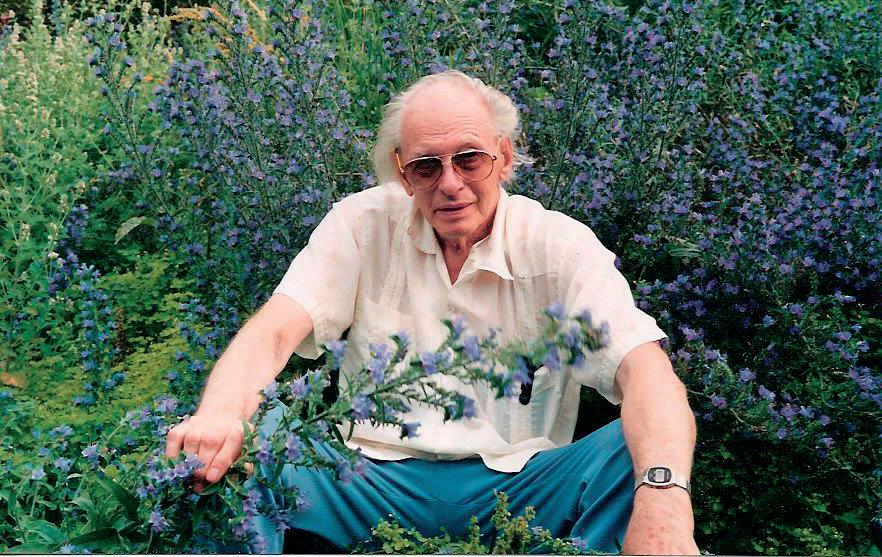
Music
Community ensembles survive the pandemic, Belleville
Howard Rees, 1st Annual Belleville Jazz Festival
Jennifer Brant echoes of tradition, Tyendinaga Mohawk Territory
Literary
Kyle Woolven wins Toronto Sketch Comedy Competition, Belleville
Al Purdy Writers in Residence resumes, Prince Edward County
Heritage
Denis Newman on mining heritage, Belleville
George Kratz is preserving the past in pen and ink, Stirling
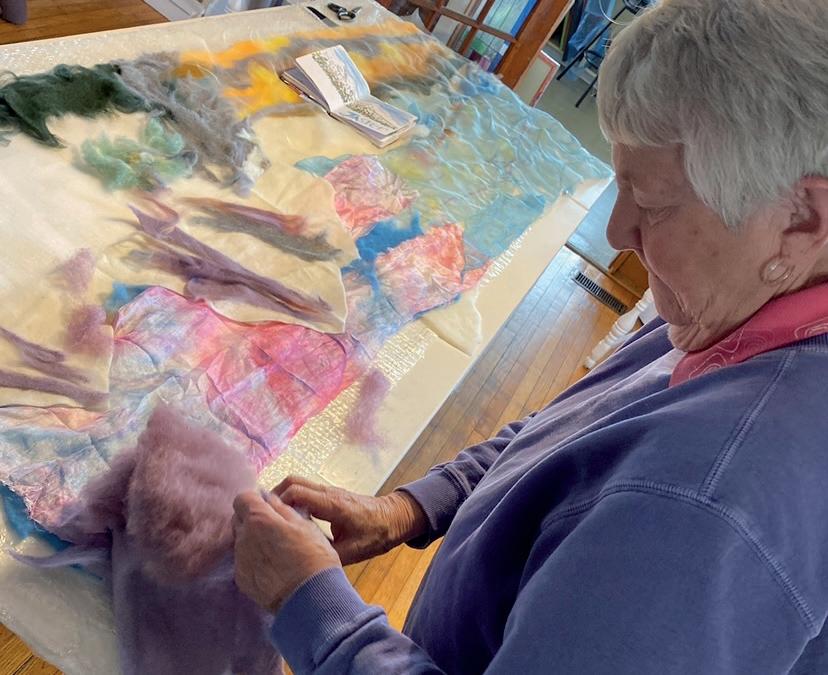
Quinte Arts Council
Quinte en Plein Air returns, Belleville
June Pride, 4th Annual Everyone Under the Rainbow, Belleville
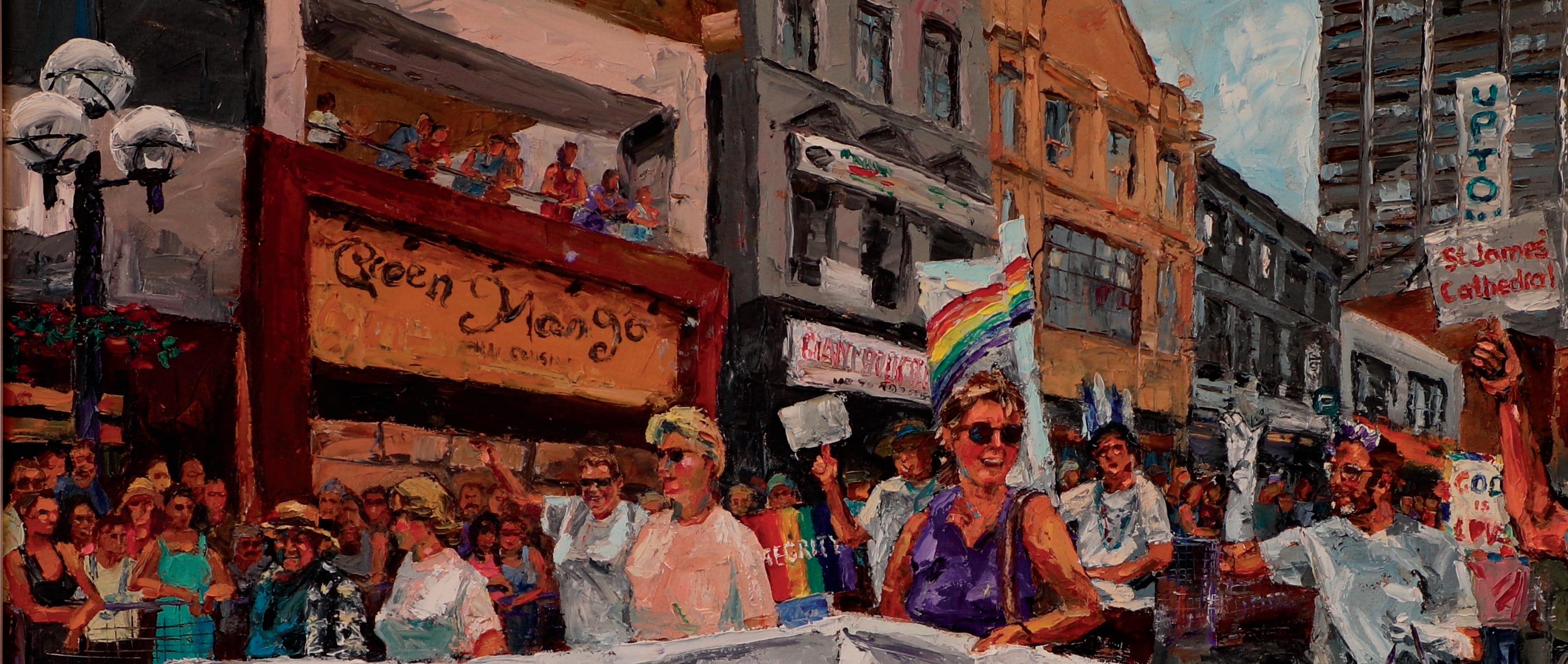
Artist to Watch: Christopher Gentile

Sponsored by the Bay of Quinte Regional Marketing Board

2 3 4 8 10 12 16 18 20 22 24 26 28 30 32 34 36 38 40
Message from the Chair + Welcoming Kodie Trahan-Guay
MESSAGE FROM CHAIR OF THE BOARD

Beyond the beauty of this magazine and new branding, the Quinte Arts Council is continuing to build upon our fresh and modern look! Our new website is modern, forwardthinking, engaging and clickable. We offer updates on arts and culture, artist profiles, events and the stories of people making an impact through the arts right here in our community. Visit, explore, and set up your profile today!
We welcome you to our newly renovated gallery space, as well. We have presented four gallery exhibitions in the first half of 2022. RISE: Because We Are Equal (celebrating women in the arts), EnviroArts: Earth Day Edition (in partnership with environmental youth Group: Friday's for Future Quinte), 100 Day Portraits by Sarah Winn, and Everyone Under the Rainbow (celebrating our LGBTQ2S+ ). It is important for us to amplify these voices in our space. Thank you to our gallery volunteers for making this possible.
As we delve back into events this year, we are thinking deeply about what is the most meaningful and impactful way to celebrate our membership and arts community. After a two-year hiatus due to the pandemic, we returned to Quinte en Plein Air this spring. Our region has had so many incredible landscapes and streetscapes painted on canvas over the years. We have no doubt that Quinte en Plein Air will continue to expand and inspire! Thank you to the City of Belleville, Downtown District Belleville BIA and every organization that joined in the annual Mayor's Arts Week!
We have embarked on a new annual fundraising event in partnership with Loyalist College that premiered documentaries created by Loyalist students featuring artists from the Umbrella magazine. The funds raised from Docs, Dinner, & Drinks will go toward arts education.
Thank you to our donors Ralph Johnston and Tony Martin whose ongoing support of the QAC has provided the opportunity for the QAC to expand its team, creating more awareness and support for arts in the Quinte region.
WELCOME NEW STAFF
Kodie Trahan-Guay (she/her) is passionate about the arts. She is a recent graduate from York University with a degree in Communication Studies. She has also completed studies in Broadcast Journalism and Public Relations, from Loyalist College. She grew up in the Quinte Region attending plays and music festivals before becoming an active member of the art scene herself. She has been in numerous plays at the Belleville Theatre Guild. Her role in the Guild’s production of "Marion Bridge" earned her a nomination for Best Actress by the Eastern Ontario Drama League.
Kodie has always loved the art of filmmaking and creating and spent a lot of time when she was in school teaming up with friends to make a stop motion version of MoulinRouge using dolls and puppets that has sadly been lost to time. Now Kodie spends her free time writing, doing voice over work, acting and making content for social media.
Kodie’s work experience includes Communications and Marketing Coordinator, helping to promote the art scene in Prince Edward County, where she lives. Kodie has also worked as a reporter for a newspaper and magazine. She has helped to run many workshops and fundraisers. Kodie is excited to be a part of the QAC team to help promote the vibrant art scene across the entire Quinte Region.
Contact Kodie at: kodie@quinteartscouncil.org
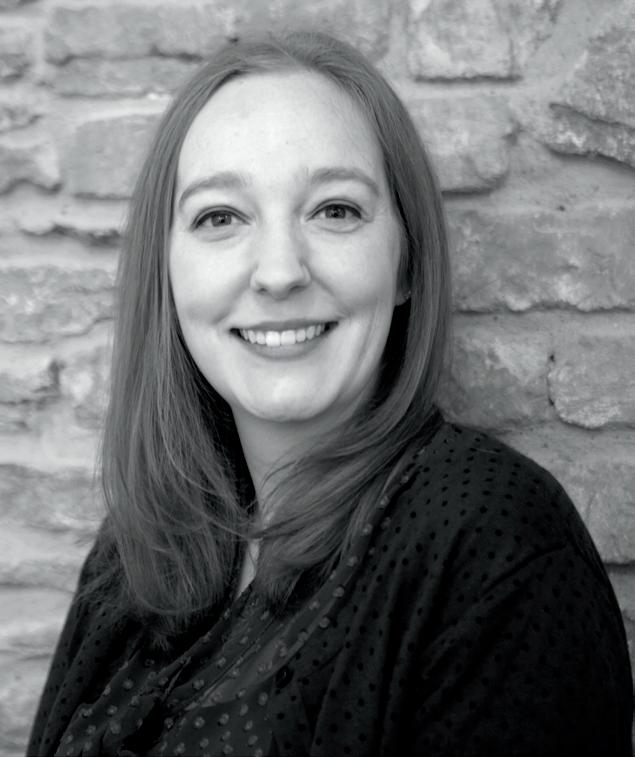
02
Andrea Kerr
Kodie Trahan-Guay
2021 Arts Recognition Awards
T he Quinte Arts
Council celebrates the importance of art and artists in the community with their Arts Recognition Awards. Each year the QAC receives nominations from the community for local arts champions who deserve to be celebrated for their artistic excellence, cultural leadership or contribution to the arts.
The recipients of the 2021 Arts Recognition Awards were photographers Bob House and Mark Hopper, local artist Lisa Morris, local arts enthusiast and philanthropist Ralph Johnston and the Bay of Quinte Regional Marketing Board for their support of the Quinte region.



Bob House is a Quinte-based photographer and believes the arts are for everyone. House ran a photography studio for 20 years and was a founding member of PhotoMatrix, a group that provided a way for local photographers to organize exhibits and workshops. House volunteered his time to Quinte Ballet School of Canada photographing performances and served on the board. He also served on the board for the QAC. Mark Hopper, a local photographer, has a signature style of stunning landscapes that makes photographs look like paintings. He enjoys using his photography
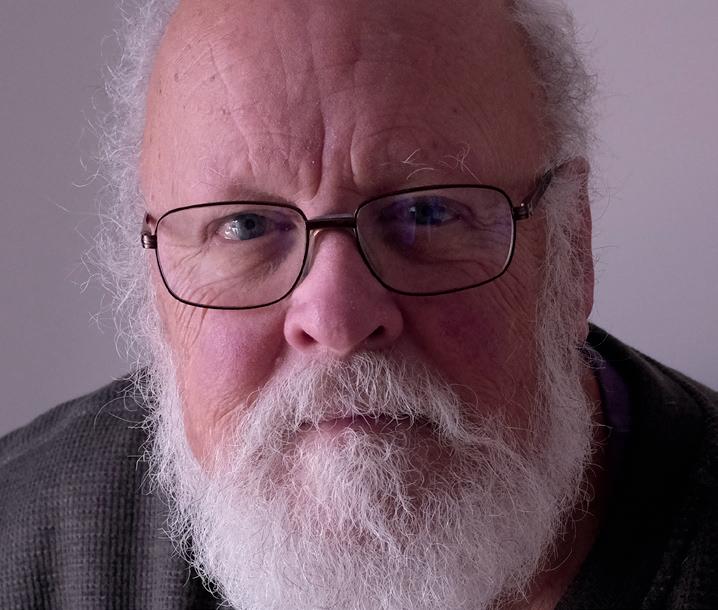 By Kodie Trahan-Guay
By Kodie Trahan-Guay
to benefit others, donating proceeds of his sales to the Christmas Sharing program. During the pandemic when the province went into lockdown and longterm care homes had to be closed to the public, Hopper donated prints of his photography to residents of Hastings Manor while they were on lockdown.
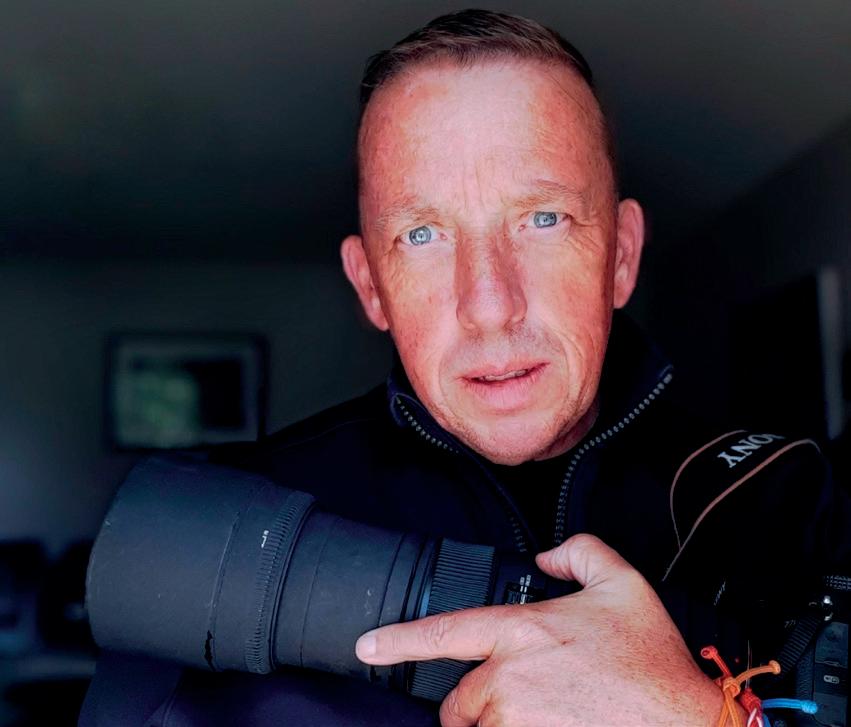
Lisa Morris is an artist and a pillar of the arts community in the Quinte region. Morris is dedicated to making art accessible and uses it as a way to build community. She co-owned Artists + Artisans Gallery, a space for artists who may not have had the opportunity to show their pieces. It gave them a space to display their work in downtown Belleville where it would have a larger audience. Morris is currently the Director of House and of Visual Production at River & Main Theatre.

The Bay of Quinte Regional Marketing Board team—Dug Stevenson, Jennifer Achilles, Trevor Norris, and (formerly) Courtney Klumper—advocate for the Quinte region while promoting events and activities for residents and visitors. BoQ tirelessly supports the arts and inclusivity. They ensure the Indigenous community is included in every possible event and find funding opportunities for Indigenous businesses within the Bay of Quinte region.
Ralph Johnston is a philanthropist and arts enthusiast. Johnston, along with his husband Tony Martin, provided much-needed support to help the QAC survive the pandemic. With lockdown restrictions making it impossible to open to the public, the support Johnston provided enabled the QAC to engage with the community from a distance. The Umbrella magazine has been an effective tool to engage with the arts community and keep everyone informed about how talented the individuals in the Quinte region are. Without the support of patrons like Johnston, none of this outreach would have been possible.
The QAC is looking for nominations for the 2022 Arts Recognition Awards. Do you know someone who is a local arts champion and who deserves to be recognized for their artistic excellence, cultural leadership and/or contributions to the arts?
Email qac@quinteartscouncil.org to nominate someone. Artists must reside in the Quinte Region and past nominees are ineligible. Nomination deadline is July 31, 2022.
03
Lisa Morris Bob House Ralph Johnston
Mark Hopper Bay of Quinte Marketing Board
Belleville


Photography
Sean Ferguson
Prince Edward County
Photography has always interested me. The emotions that pictures elicit in me have always been just as interesting as the photo itself.
I picked up a camera in my mid 20s for the first time and dabbled in it until my late 30s when my interest in photography really took off.
In 2019, I started working with the Shatterbox Theatre group, which nurtured my interest in taking a picture that tells a story by capturing the decisive moment.
Every picture I take says something: something about me, something about you, something about society. My last show “Surviving Progress” was strictly about the housing and rental crisis in Prince Edward County.
My current preference is to shoot analog film photography. I don’t care for pixel-perfect images; I prefer grain, lens flair, and the unpredictability of devel-
opment. In a world of convenience and instant gratification there is something special about that process for me.
Focusing on documentary/street photography at first, I’ve slowly moved towards art photography and believe my work now lands somewhere in the middle of those aesthetic styles. Contrast, hard shadows, negative space, emotion and the feeling of isolation have remained the constants in my work.

James Natcheway, Anton Corbijn, Nobuyoshi Araki, and Saul Leiter –each of these photographers inspire elements in my work. As the world begins to open up I'm looking forward to showing more of my work.
I want my images to tell a story, or convey a mood. I want somebody to look at my image and feel what I felt when I took the picture.
IG: FSLASH12 fslash12.ca
Photography


06
Photography
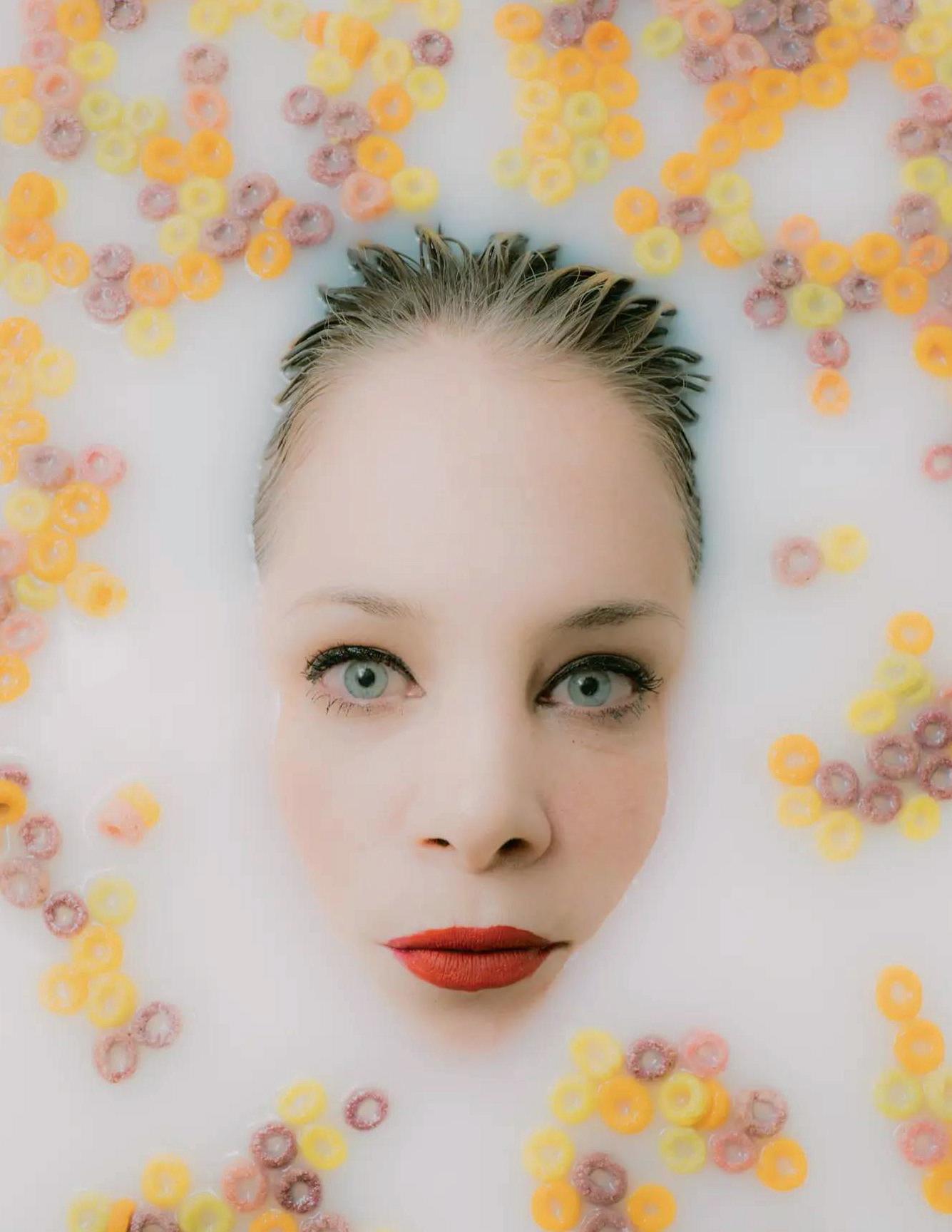
Photography 07
By Jennifer Shea
Fine Arts
Stonedragon Studio's
website greets visitors with fanciful wire sculptures of various types of birds. Further exploration of artist Iris Casey’s wire gallery introduces more of these detailed sculptures, along with their names. “When I’m creating my creatures, I try to give them a little bit of personality, so they evoke a memory or create a smile when somebody’s looking at them,” says Iris. “They all have a personality, so they have to have names.”
ago has allowed Iris and her family to be closer to the inspiration of nature. It also gave her much more time to focus on her artistic pursuits.
Casey had taken a variety of sculpting courses over the years, but she learned how to work with wire from artist/sculptor Chuck O’Neil. “I just loved the feel of the wire and the way it flowed and how
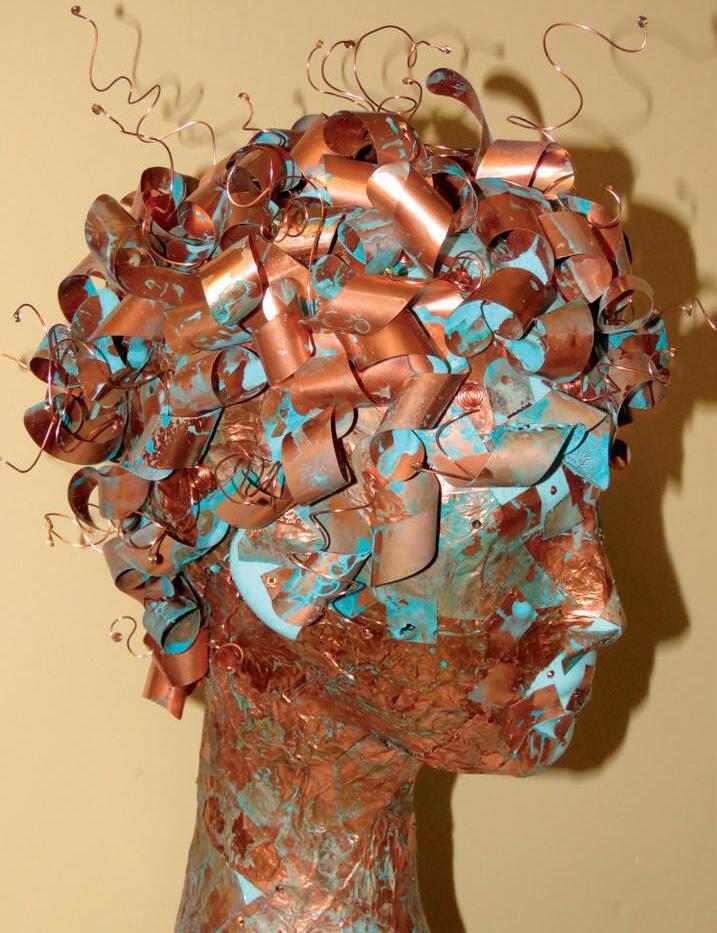

I could create creatures from it. I fell in love with it.”
Casey can often be found scouring junkyards and antique markets looking for pieces that speak to her. “I think about how I can incorporate them, especially with my crows. I started them during the pandemic because I needed something to amuse myself. It was fun finding bits and pieces that went with an aviator or a gladiator or a hippy.”
An affinity for birds is in Casey's blood. Her mother was keenly interested in birds, her daughter became a wildlife biologist, and Iris volunteered as a bird bander. A move to Carrying Place upon her retirement as a science teacher 14 years
One of her wire sculptures that hold fond memories for Iris is now in the home of a collector. “It was pretty much a full-sized hawk perched on the edge of a fence post ready to fly off.” This piece was created as part of a program matching artists in
08
“I just loved the feel of the wire and the way it flowed and how I could create creatures from it.”
“I want to create a statement of colour, of movement, of texture, of an emotion captured.”
Iris Casey
Prince Edward County
Prince Edward County with authors in England. Iris got matched up with a gentleman who wrote a poem about her raptor.
Casey’ other artistic medium of choice is mosaic. “In my mosaic work, the excitement lies in the juxtaposition of pieces. I want to create a statement of colour, of movement, of texture, of an emotion captured.” Iris’ mosa-
ic pieces can be flat, but often are three-dimensional. “I seem to have a fascination for mannequins. There was a place in north Toronto that had thousands of them. Every once in a while, I’d go down there and find a piece.
The pieces sit in my studio sometimes for years until I look at them one day and say, ‘Oh. I know what I can do with


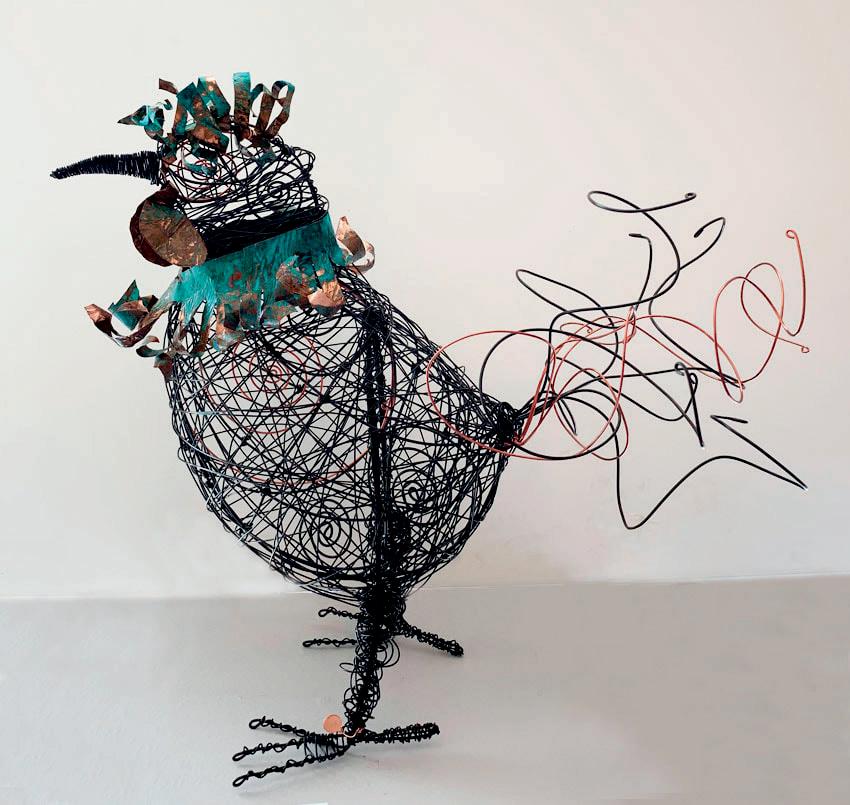
that now’. It just sort of evolves. I add something to it until I’m happy with it.” Casey’ ultimate goal is to get a response from people when they look at her work, whether it evokes a memory, a smile or a laugh. Her pieces can be found by chance at her Stonedragon Studio in Carrying Place, Arts on Main Gallery in Picton, or Gallery 121 in downtown Belleville.
www.iriscasey.com

09 Fine Arts
By Lin Parkin
When Paulette
Kinmond moved to Trenton in 1999, she was shifting careers to the nonprofit sector: “I loved the area, so I decided to stay.” Over the next couple of decades, she spent hours every day commuting from Trenton to Toronto in her roles with World Vision, Gideons International, and Crossroads Christian Communications.
The work provided ample opportunity to travel abroad: “I've been to the Philippines, Colombia, Africa, Australia, Cuba, and all down the southern hemisphere. I've been to India, China and the UK.”
For Kinmond, travelling meant trying new things, meeting new people and making a difference in their lives, and looking beyond what’s immediately visible. When working in a remote area of Ghana in West Africa, she learned the Zulu greeting “Sawubona!”
That sentiment inspires many of Kinmond’s paintings, which often include older people: “I see the story on their faces, and so, I attempt to tell their story. Even a vase of flowers has a story. What I'm trying to do with my art is express the story of that person or object, or that landscape or animal, what I think they would tell if they could speak or what they would like to share.”
She says, “I started getting into it more about three years ago. Then during COVID, I really got more serious about my art, and now that I'm semi-retired, it's become more than just a hobby. It's a life passion. I absolutely get lost in it.”
She explains, “It means ‘I see you.’ But it's not just I see you. It is: I see your family, I see your work, I see your gifts, I see your talents. I see everything that is about you.”

Kinmond has found camaraderie within the Arts Quinte West community. “When we get together, it’s like we’re talking our own language and connecting,” she says. “Everyone wants to learn how to do that or what inspired you to paint this. You move into this community of like-minded individuals who are inspired, motivated, and love what they do.”

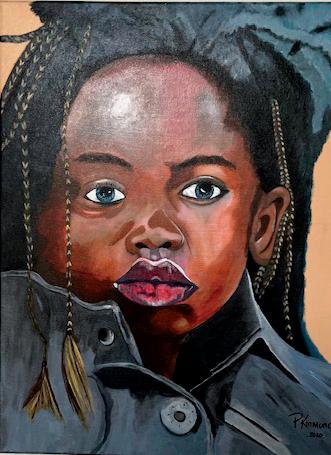
10
Fine Arts
“It's become more than just a hobby. It is a life passion. I absolutely get lost in it.”
Paulette Kinmond Quinte
West
Kinmond encourages people to take a leap of faith and stretch themselves. “Go take an art lesson and catch the fire of what it means to explore something new.”
Encouraged to keep challenging herself creatively, Kinmond recently displayed three new paintings at These Four Walls Gallery in Trenton that use mixed media.


“I incorporated cloth material into my paintings,” she explains. “One is of a sunflower. I used coffee grinds for the centre, using glue and paint to change up a bit of the element. You can just take and incorporate so many things into your work in different ways. And why not?”
Kinmond’s artwork can be seen in the Arts Quinte West (AGW) showcase at City Hall. This summer, she plans to turn her “she-shed” into an art studio where she can exhibit her work to visitors. Paulette annually hosts AQWs en Plein Air during the month of June in Frankford.


IG: @paulettekinmond 11
Theatre
Fine Arts
Art of the tattoo
By Fiona Campbell
ered in the glacial mountains of Italy.
Tattoos are found around the world, and can’t be traced to one origin or common purpose. Under the Roman Empire, slaves were tattooed as a mark of ownership, but in the Pacific Islands tattoos were esteemed symbols of status. Sailors used tattoos to commemorate achievements at sea—the sparrow marked 5,000 nautical miles, a King Neptune meant crossing the equator— while circus performers displayed their tattoos as curiosities.
Tattoos are the emblems of bikers and criminals, but also instruments of healing, transforming scars from marks of pain or shame to ones of beauty. Over time tattoos have meant many things: rebellion, counterculture, affiliation, honour or simply fashion.
But are tattoos art?
Consider the language of tattooing: the body as a “blank canvas.” Like traditional

colour theory, contrast, flow, points of interest, texture, and cohesion. There are needles just like fine pens, Sharpie markers, paint brushes, and even ones that imitate a spray can.
But doing artwork on a human body differs from any other medium: there is no defined border to the canvas, and the surface of the body changes inch by inch. Age, texture, blemishes and skin tone all affect the rendering of the tattoo. Then there’s placement: how the tattoo flows and works with the contours, shape and movement of the body.
Just as there are many styles of art, there are dozens of tattoo styles— watercolour, abstract, portrait, fine line, geometric, realism, illustrative, cartoon, to name a few— as well as American Traditional (aka Old School), New School, Neo-Traditional, Japanese and Tribal, each with its own rules, symbols and aesthetic. Tattoo trends come and go, and artists may be versatile in many styles, though most have a creative preference. Tattoos are as individual as the artist, and each will have a distinct portfolio.
on skin. Tattoos cannot be appraised, bought or sold, subverting the traditional gallery business model.
While displaying tattoos used to carry a social stigma (they were even illegal in New York until 1997), people of all ages are now getting inked on all parts of their body, though hands, face and neck are still considered career-limiting. Today people get tattoos as memorials, to commemorate a life moment or event, or simply as decoration.
Some argue tattooing is like a trade or a craft, with on-the-job training through an apprenticeship, and a strong connection to history, materials, skill and process. There’s also an element of service; while a painter is a solitary pursuit, a tattoo artist must collaborate in an intimate way with her client.
To answer the question, “Are tattoos art?” we asked three local tattoo artists to share their work. You be the judge. All images submitted
12
Fine Arts
Belleville / Quinte West
Feminink Belleville, ON
For Faye (pictured right), the 30-something owner of Feminink, her fascination with tattoos began (she reluctantly admits) while watching Miami Ink as a young teen. But her love for art goes further back. Ever since she could hold a crayon, she’s drawn on everything - walls, inside drawers, under the kitchen table - and her first “client” was a teddy called a “doodle bear.”


She got her first tattoo at 16 or 17, started tattooing professionally at 19, and in 2017 opened her shop. She calls her main style “real-ish-tic.” Not like a cartoon, but not photo-realism either. She rarely looks at a reference photo: “I like to just trust that my hands know what to do.”
Now that she’s been tattooing for so long, Faye finds skin the easiest medium to work with. “I struggle to achieve the same result with paint on canvas or graphite on paper that I used to,” she says.
Her clientele is primarily women of all ages, and most of her work is custom, though she offers small “flash-style” tattoos on walk-in Wednesdays. Her advice for someone thinking of getting inked is; finger tattoos are a trend to avoid as they don’t age well. But more importantly, “Go to someone whose style you love and trust them. You’ll both be happier for it.”

13
FB: @femininktattoos
Fine Arts
Black Orchid Photography
Wild Ink Studios Belleville, ON


When James was a little kid, he’d draw the same stuff as other little kids - dinosaurs, tanks and tractors - but different. “When I looked at a picture of an elephant, I’d see blue tones throughout. And so I drew elephants blue. The kids laughed at me, but the teacher looked at me different,” he says. And so started his fascination with colour theory.
Then when he got his first tattoo at 15 - a little blue sun on his shoulder that he still has today - “I just thought I could do a better job,” he says. “I’ve always been interested in the art world and always found tattoos quite fascinating. I love the history behind them.”
He didn’t start tattooing professionally until he was 24 or 25, alternating between working as a classically-trained chef and an artist. Tattooing offered him a taste of adventure (and got him out of the kitchen). He did a tour across Canada that lasted four years, working everywhere from Ottawa to Kamloops, BC, before landing in Niagara Falls for a year at Hart & Huntington Tattoo Co., founded by Carey Hart, aka Pink’s husband. He came back home about six years ago.

He can basically tattoo in every style and everywhere, but gets most excited with comic book-style art - Marvel, DC, Spiderman, Batman. “Anything that has a very defined line to it,” he says. “I love when people know exactly what they want.”

wildinkstudios.com/belleville
Fine Arts
East Coast Tattoo & Piercing Trenton, ON



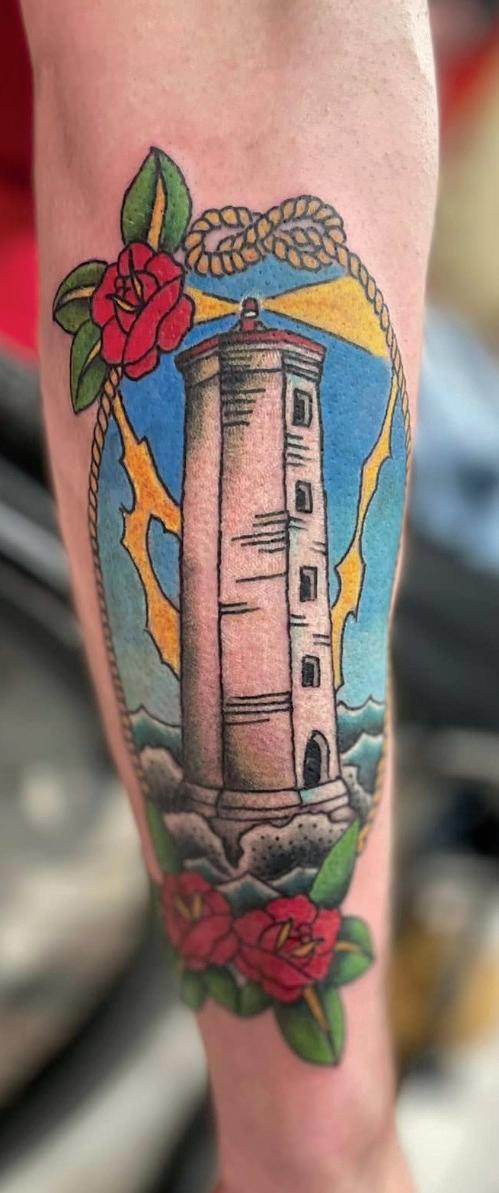
Izzy, owner of East Coast Tattoo & Piercing, has been fascinated with tattoos since she was a toddler. “It didn’t matter if you were a big scary biker dude, I was talking to you,” she says. Later, she was the kid who got in trouble for drawing on her friends. Her mum was an artist, and Izzy would “see this beautiful art on canvas, and to me, skin was canvas as well.”
At 21 she moved from Edmonton to Nova Scotia, got her second tattoo and then just “never left the shop.” There weren’t many women tattoo artists then, so she wasn’t actually an apprentice. “I was just a permanent fixture in the shop for about five years.”
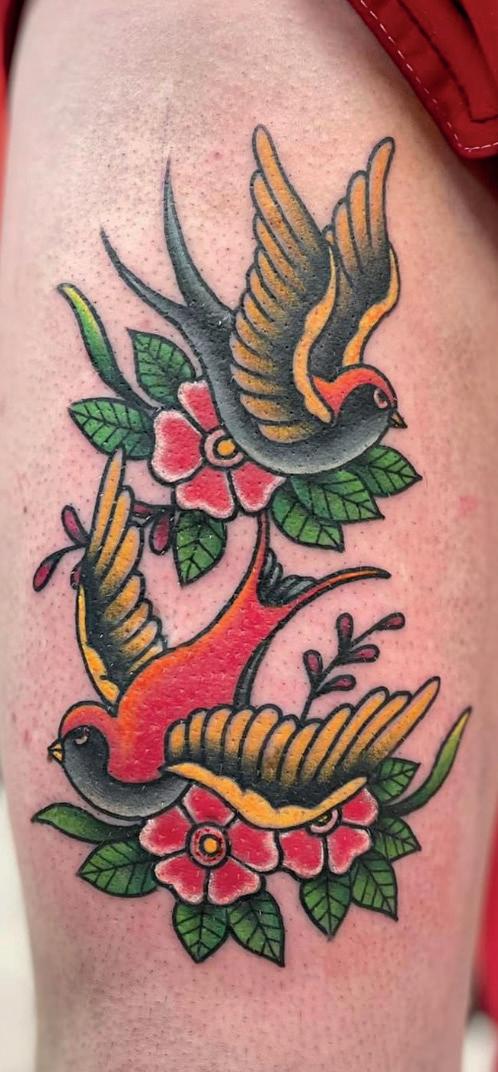


Twenty years later, she and her husband run their own shop, each with their own style. Izzy likes semi-realism, while Paul specializes in old school, traditional, and Japanese.
A lot of their clients are military members who suffer from PTSD, and she also runs a program with human trafficking victims. “We’ve realized over the years that tattooing is beneficial for mental health issues,” she says. “We can't save everyone with tattoos. But if we can save one person out of ten, that is a big win.”
BEFORE AFTER

15
FB: @eastcoasttat2studio Fine
Arts
Student documentarians turn their cameras on local artists
By Peter Paylor
Graduating students
from Loyalist College's Television, Filmmaking & Digital Content Creation Program take a course called Advanced Field Production, and while that may seem mundane, the results are anything but.
Paul Papadopoulos, who teaches the course, says: “They chase a story, they prepare the story in pre-production—preparing their questions, their script, pre-interviewing, and then they go and shoot the
interview, get their B-roll, and they come back and craft the story further, edit, and then package it together so that it exists on the landing page of the website for that story.
“We’ve been thinking about how to lift the arts community and promote the arts community, so I’ve tasked the students this year with telling stories about artists in the community based off of stories that have been told in the Umbrella. They
Loyalist College Belleville
get their research right there. Here are the stories, choose one, you’ve got the basic info so when you contact them you know about them already to ask further questions. Now they’ve got a story that’s easily accessible and the artists have a short documentary about their own story and what they do and how they got there.”
Five of these stories were chosen to be screened at “Docs, Dinner & Drinks”, a fundraiser for the Quinte Arts Council that was held in downtown Belleville in May.
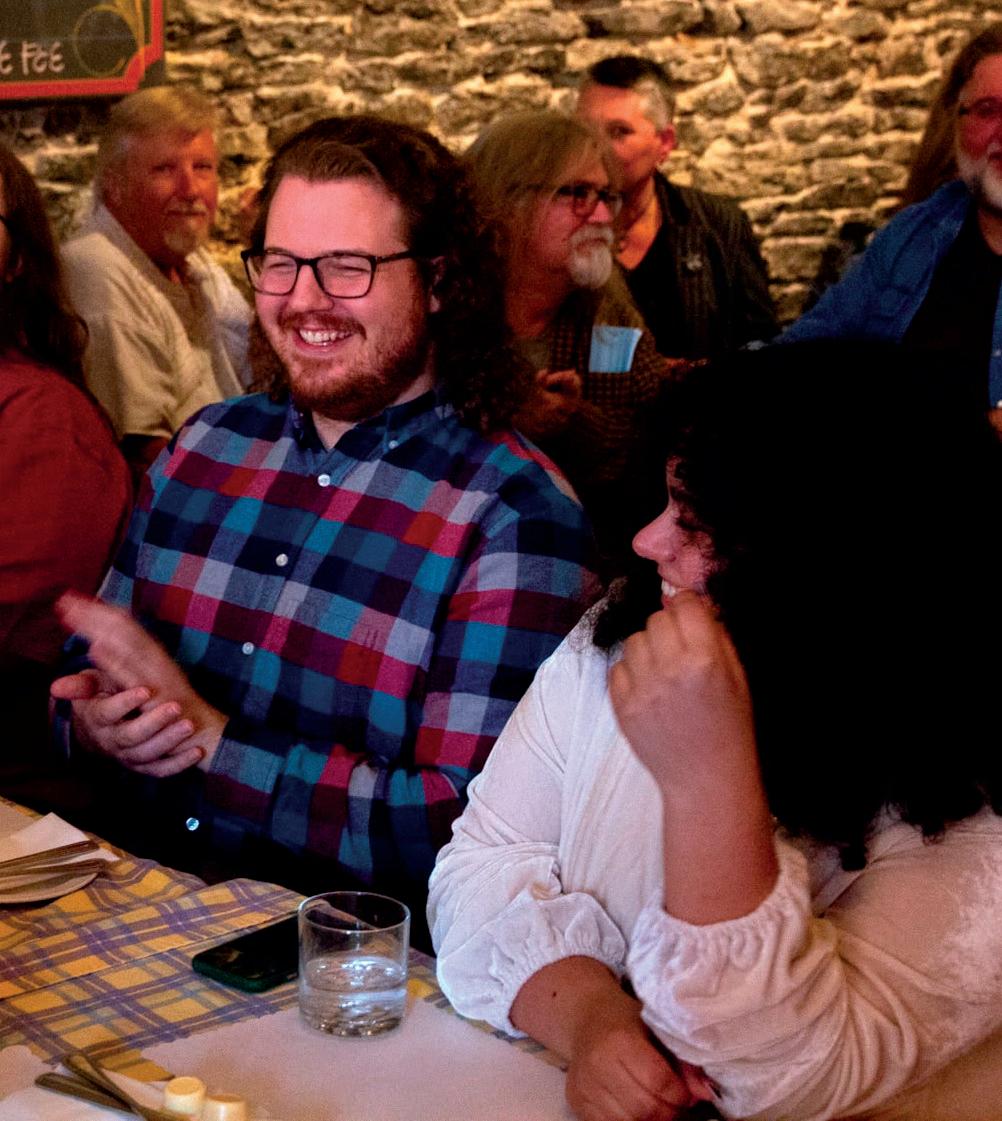
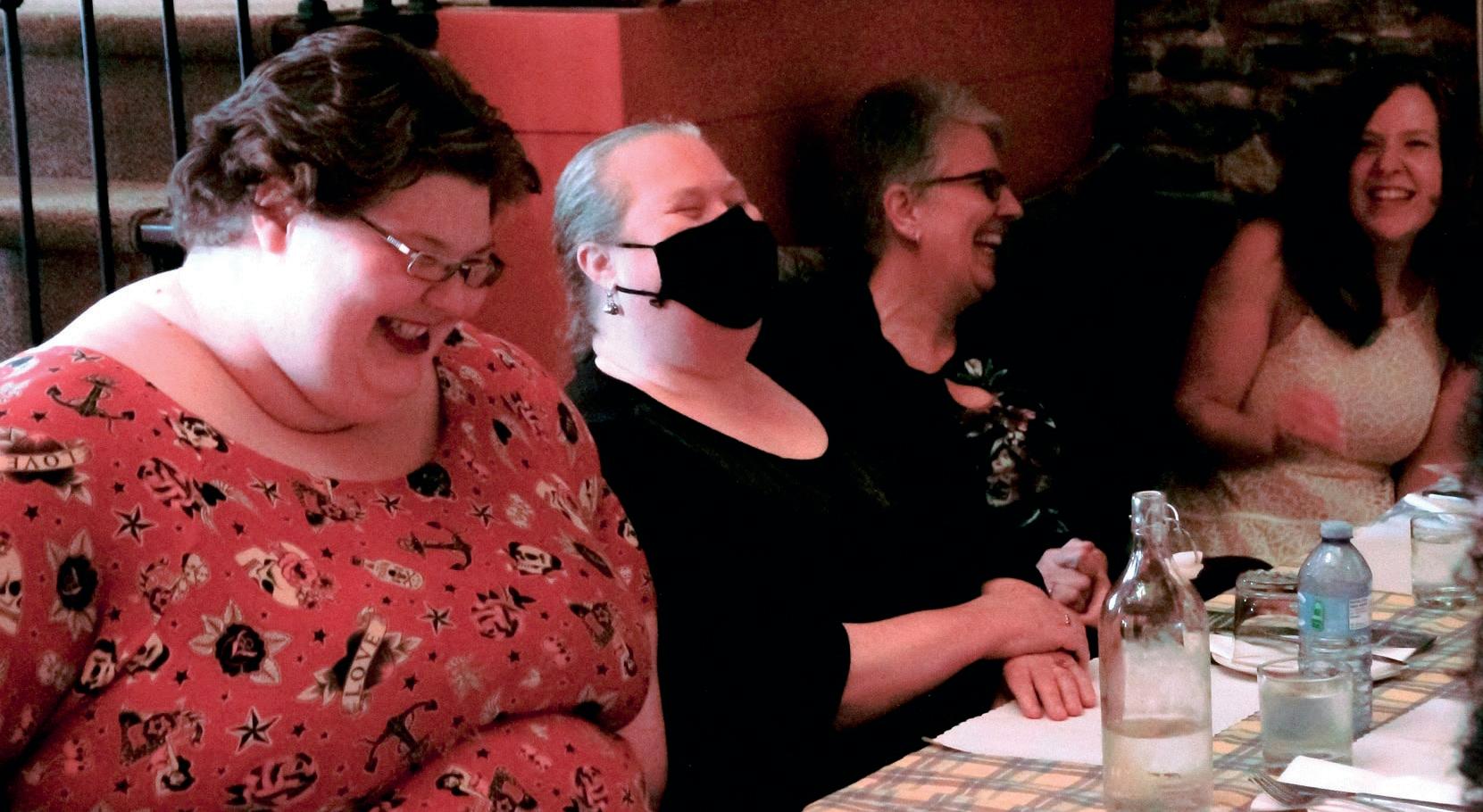

16
Film
“Piece of Mind'' is a profile of Belleville mosaicist Karen Ritchey. “Obscura” turns the camera back on Sean Scally, an award-winning documentary filmmaker from Trenton. “Artistry in Adversity” follows tattoo artist, Jamie Williams, as she deals with COVID-19 lockdowns at her business, Picton Tattoo Club. “Forging a Legacy” tells the story of blacksmith, Amy Liden, and how she opened her own forge in Picton. “Coping Through Quilting” is a
poignant look at Picton quilt maker, Bill Stearman, who opened up about his past to the young filmmakers.
“It’s really interesting how a subject will open up to a stranger more so than close friends,” says Papadopoulos. “So you get these really heartfelt, heart-warming stories that really make you…I choked up when I saw the Bill Stearman story. I think people will be touched by that story, and it’s only a small part of who
Bill is, but I think it was great that the students were able to get that great story out of him and that’s something I’m really proud of.”
Papadopoulos was excited about the opportunity for his students to interact with the public at the "Docs, Dinner & Drinks" event. “Students - young artists, documentarians are artists - showcasing local artists, it goes hand in hand perfectly.

Our students get to feature their work in a public forum that focuses on their work as artists, telling their stories about artists in the region.
It’s a perfect mixture of what we do at the college and what we do at the Quinte Arts Council, promoting local artists. I think it’s the perfect marriage.”



17
All photos by Daniel Presley Spinks
Film
Many hands in the making
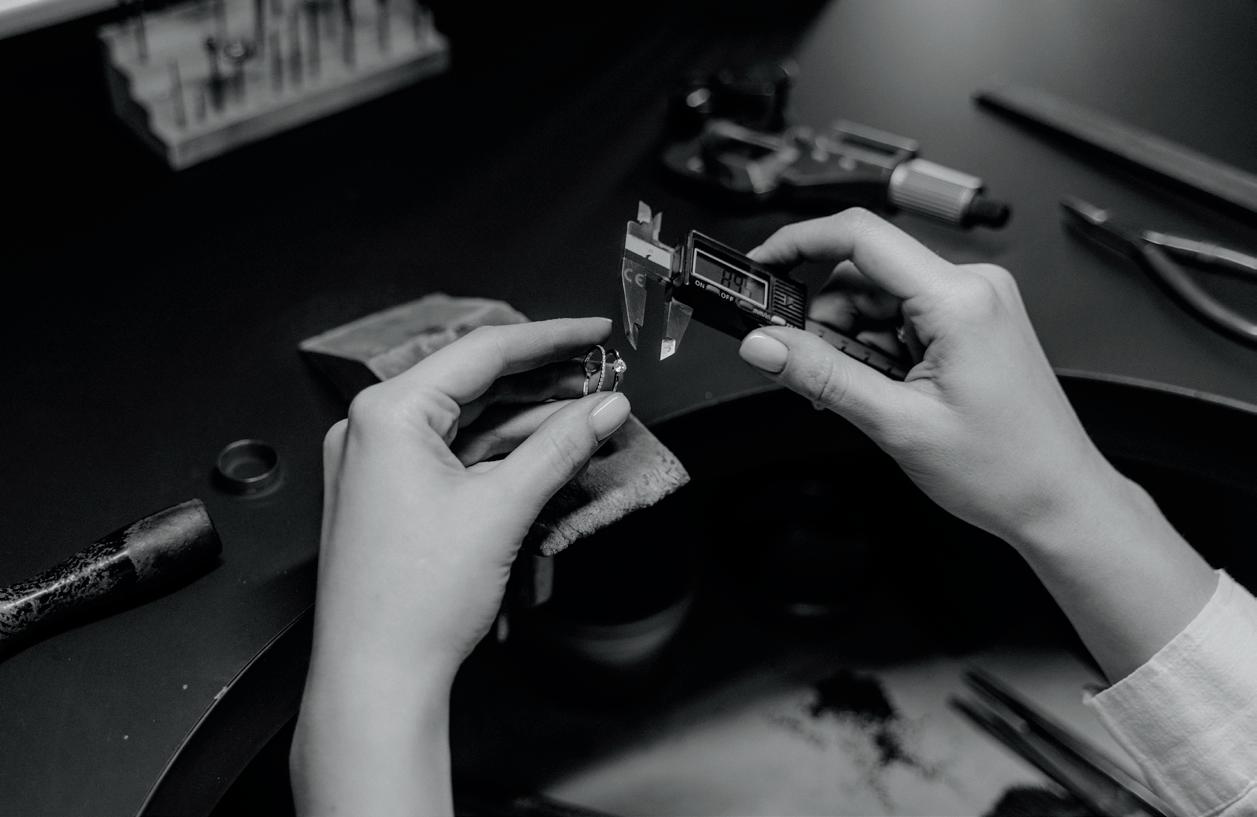 By Janet Jarrell
By Janet Jarrell
Universally, jewelry
is an adornment we associate with status and rank. In prehistoric finds, it was made from bones, shells, and stones and some cultures wore jewelry for its protective power to ward off danger.
Although born in Canada, Thomas lived much of her adult life in Spain and knows firsthand the history of the jewelry guild, working with the guild in Valencia from 1991 to 2007. In Medieval Europe, merchant, trade, and craft guilds were formed protecting artisans and related trades. These associations of craftspeople became extremely powerful and dominant with political influences
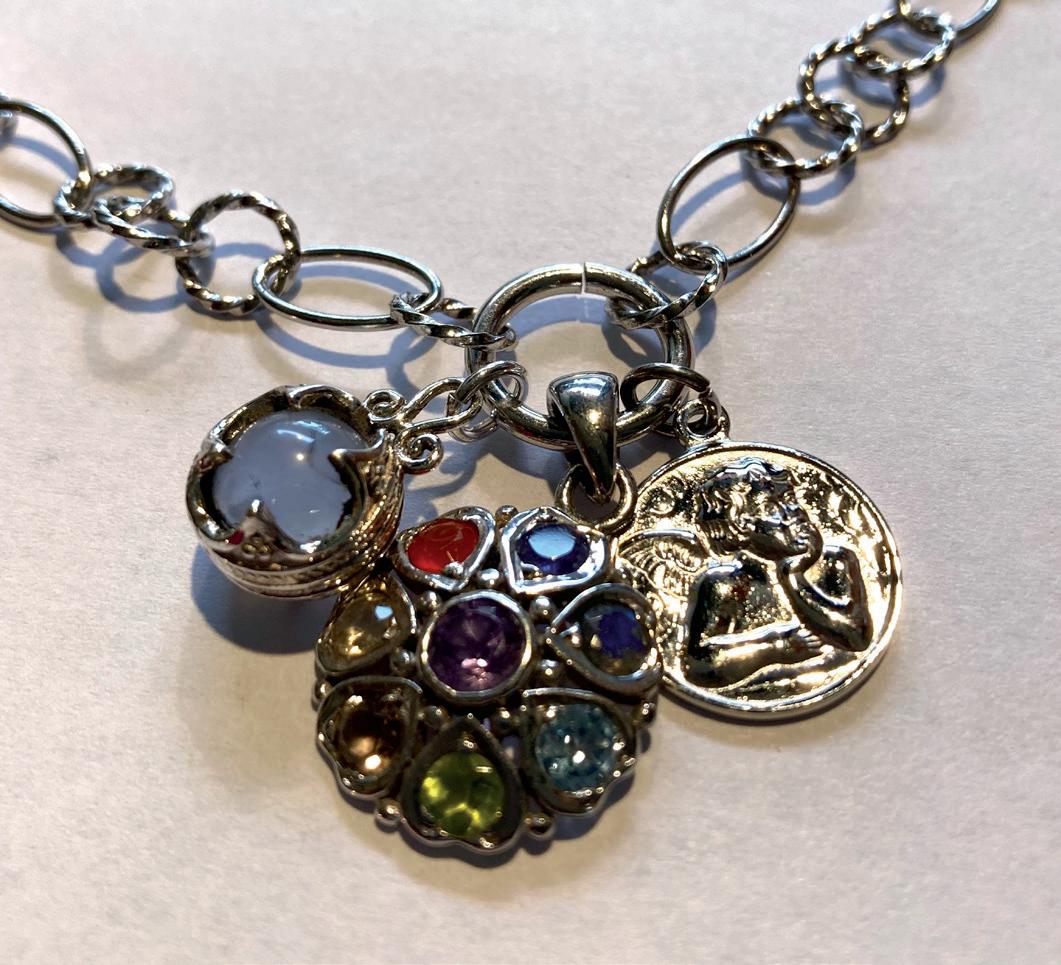
and interactions with wealthy patrons of the arts. The guilds followed stringent guidelines; the processes were strictly regulated and controlled to protect the quality of the craft and integrity of the members. The more important and complex the trade, the longer the apprenticeship – for silversmiths, that meant six years under a master.
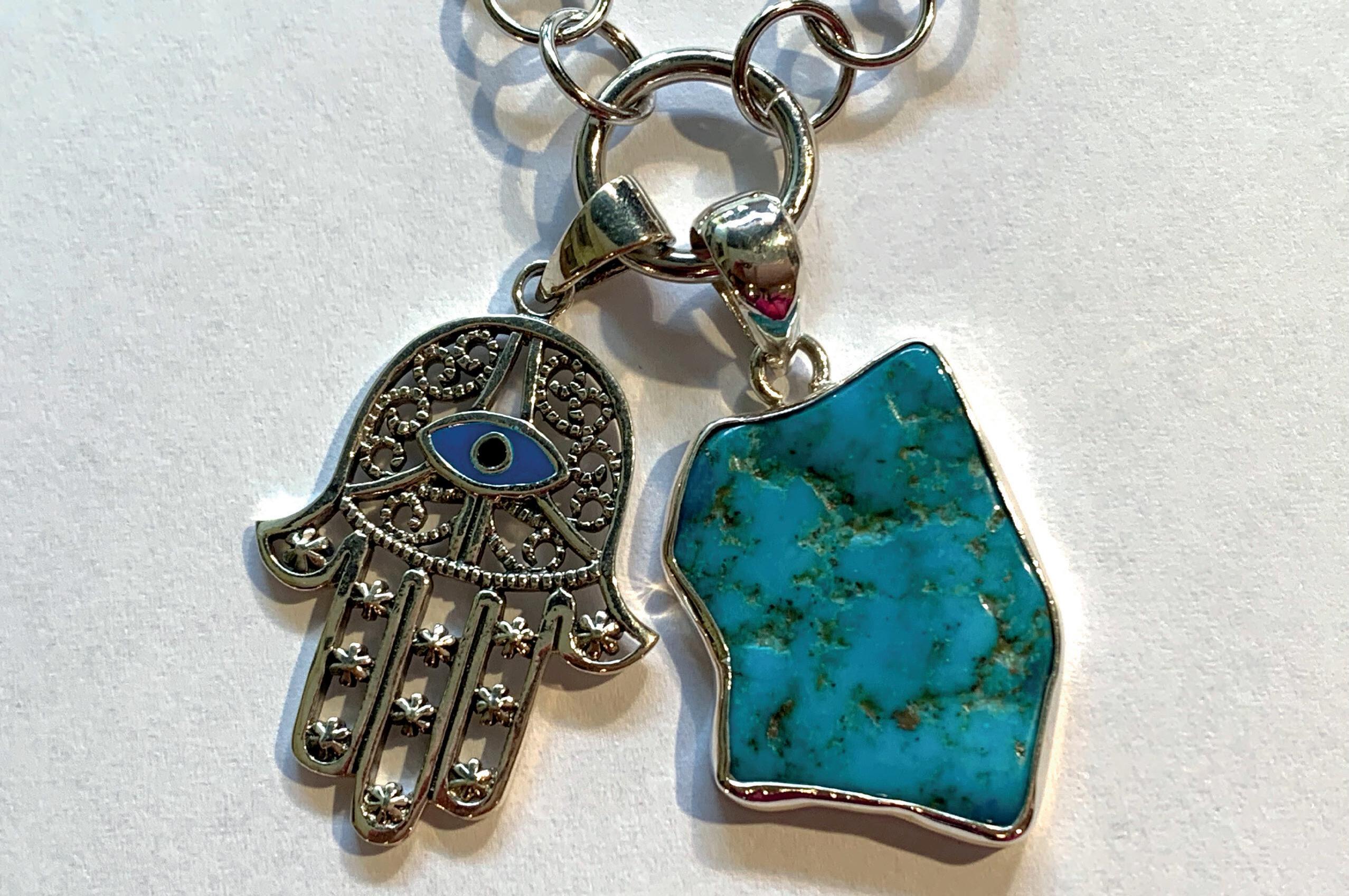 Erin Thomas, of Thomas Estevez Design in downtown Belleville, creates unique jewelry
Erin Thomas, of Thomas Estevez Design in downtown Belleville, creates unique jewelry
18
Crafts
Erin Thomas Belleville
Jesus Estavez
Jesus Estavez
This was a time when artisans focused on perfecting one craft; therefore, one piece of jewelry meant many hands in the making. There is an art to this process, a flow of energy from one artisan to another and a true sense of pride in craft.

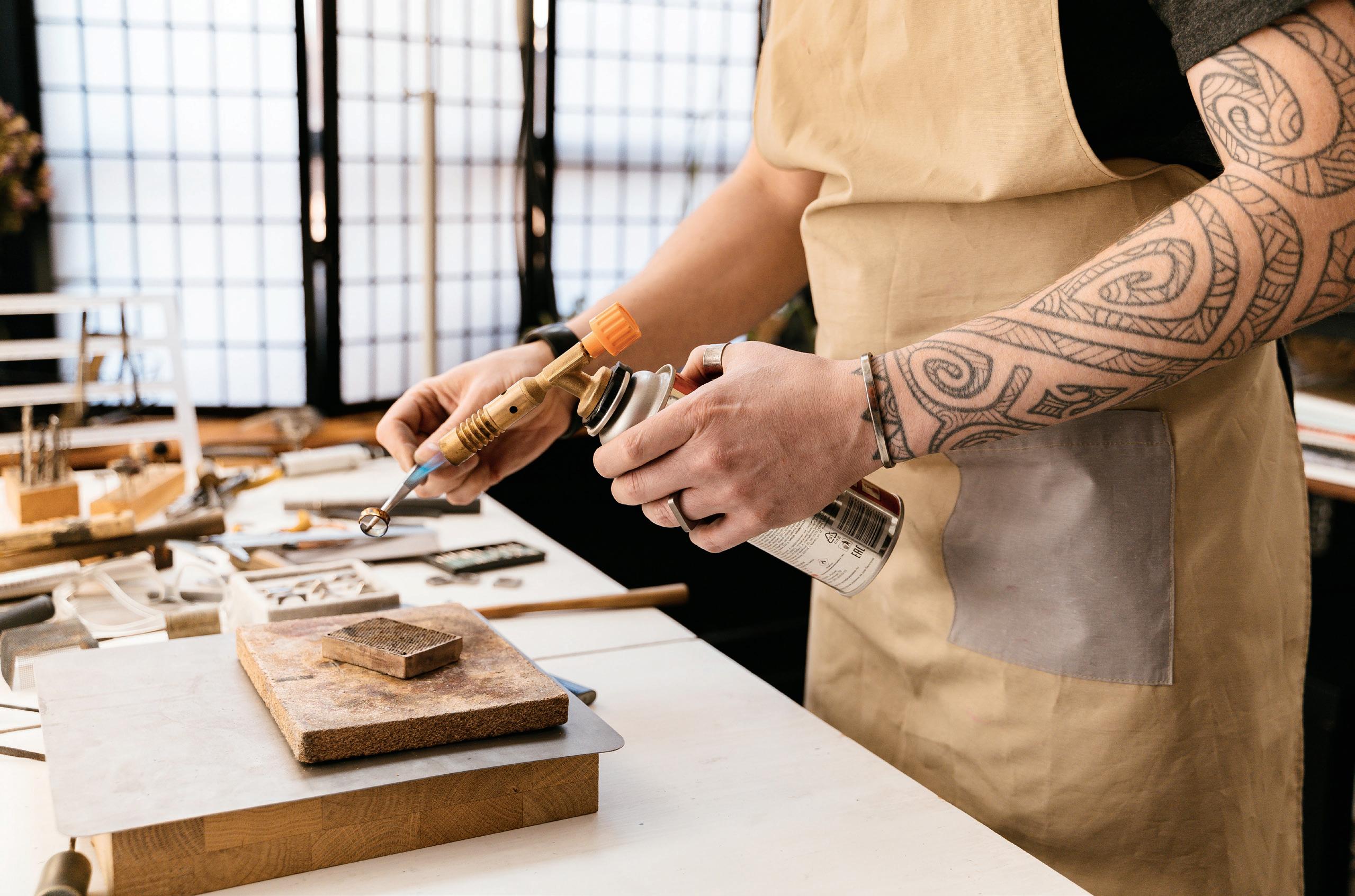
It starts with a designer who makes a drawing with specific measurements (specs) - a life-sized design enlarged from all sides. Then a model maker builds a metal model that will be made to the specs of reduction; “this metal model is called ‘the original’, so, there's a lot of math involved here, and everything has to be considered within a millimetre of accuracy because there are always losses of mass and the stone setting will not work unless all this is calculated,” notes Thomas.
Then the original goes to the mold maker and cutter, after which the mold is brought to the wax injector. Continue to the meltdown centrifugal center, which both builds what is known as a tree of waxes and then injects molten spinning
metal into that cylinder. “If this is not done perfectly, the metal will be "sour" and break if there are bubbles. They must know what they're doing; any dust will also ruin the piece,” says Thomas.
Then the repasser gets the rough pieces of metal from the wax tree, who files, refines and solders the piece without "eating it", keeping the original shape intact. The rough piece and stones are taken to the stone setter, then the polisher, who passes it onto the flash plater “who puts down a microlayer of pure silver 999 to cover pores, or rhodium finish or gold finish or a combined bi-colour finish’, says Thomas.
Finally, the last hand is the industry stamper, who tests and marks the silver mark and design mark to be stamped onto the piece.
“The designer oversees the entire process and takes the evolving piece of jewelry to each address and if any worker has done a less than a good job, the subsequent worker will refuse to work on the piece. It is up to the designer to keep the team tip
top and happy. So, the designer needs all these technicians and must be able to do or at least deeply understand the work of the tech people.”
“In Europe, the tech people are shared by the guild and the best ones are in high demand. Sadly, since globalization, the Spanish guild has almost completely dissolved.”
therocks.ca
19
Crafts
Jesus Estavez
Nell Casson reflects on her mother’s career as an artist

 By Lin Parkin
By Lin Parkin
B orn on a farm in
Peterborough, Marion Casson was influenced by her parent's creative approach to farm life. “Her mother, Lily, made the most beautiful embellished pies, and her father, Alf, was a solid, hard-working farmer,” says Marion’s daughter Nell Casson. “Alf was an inspired thinker and bought retired circus horses to drive the plows in his fields.”
After attending teacher's college, Marion moved to Kitchener, Waterloo, where she joined a potters guild. In 1971, she and her husband moved to Prince Edward County. “They bought an old farmhouse with twenty-five apple trees and a large garden plot on the shore of the Bay of Quinte,” Nell explains. “Originally, they had dreams of setting up a pottery studio in the old General Store, but a smart real estate agent steered them across the road to a waterfront home.”
“She set up her pottery studio in Rednersville and threw pots until her wrists went numb,” Nell says. So on the cautionary
advice of her doctor, Marion decided to try a ‘softer art.’ She bought a loom and joined the Belleville Weavers and Spinner Guild: “She learned from some of the best: Joan Reive, Katherine Roulet, Mary Hagerty and Esther Grav, to name a few. Her weaving took over the house filling every room with skeins of wool and silk and cotton and colour,” recalls Nell.
Prince Edward County
Marion was an avid traveller, and her adventures took her to San Miguel, Mexico, Portugal and coast-to-coast in Canada. She showed her work and took classes in weaving and felting in locations across America, Finland, Iceland and more.
A lifelong student of the arts, Marion often enrolled in new painting and colour classes and experimented with different techniques: “She got back into oil painting and worked en plein air, travelling to Lake Simcoe and Algonquin Park with accomplished painters such as Claudette Boulanger, Barbara Whelan and other friends from the Quinte area.”
20 In Memoriam
“There’s no such thing as too much colour”
- Marion Casson
“I feel so lucky to have grown up in a creative, feminist household filled with art. It seemed time flew by some days, and hours would pass in a swirl of colour and fibre. My choice to pursue a degree in Fine Arts was encouraged and supported, and my mom was a collaborator and critic of my work,” Nell says.
Marion and Nell often exhibited work together, most recently submitting a 16ft long felted piece to the ICE BOX Festival in 2020. Their artwork has been praised by audiences large and small: “She was more than just a mother; she was a contributing artistic partner. I wouldn’t be the person I am today without her influence (and genetic code).”
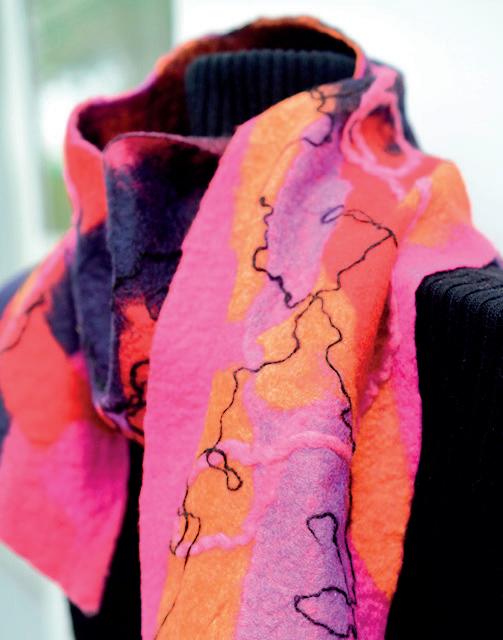
Marion was a member of the Ontario Craft Council, Quinte Arts Council, Prince Edward County Arts Council, Rednersville Road Studio Tour, PEC Studio Tour, Belleville Arts Association, Gallery 121 and several independent fibre and arts groups.
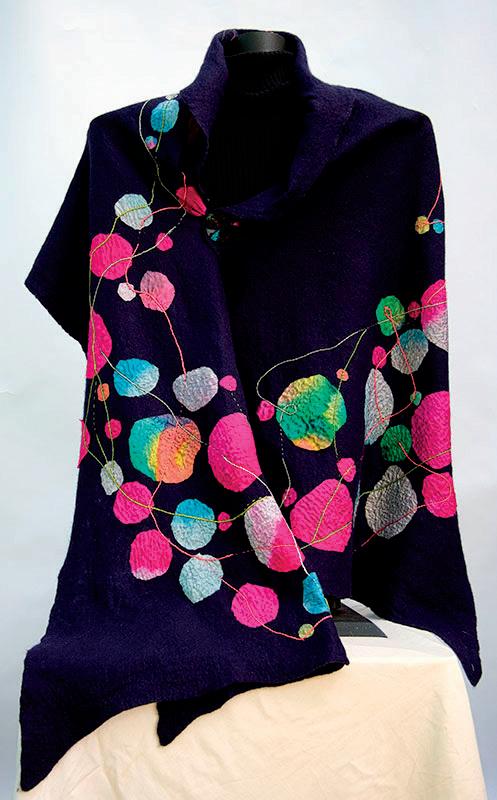
Nell says, “These groups created a network of workshops, sales, critical and social support and a healthy environment to grow an art practice and career.”
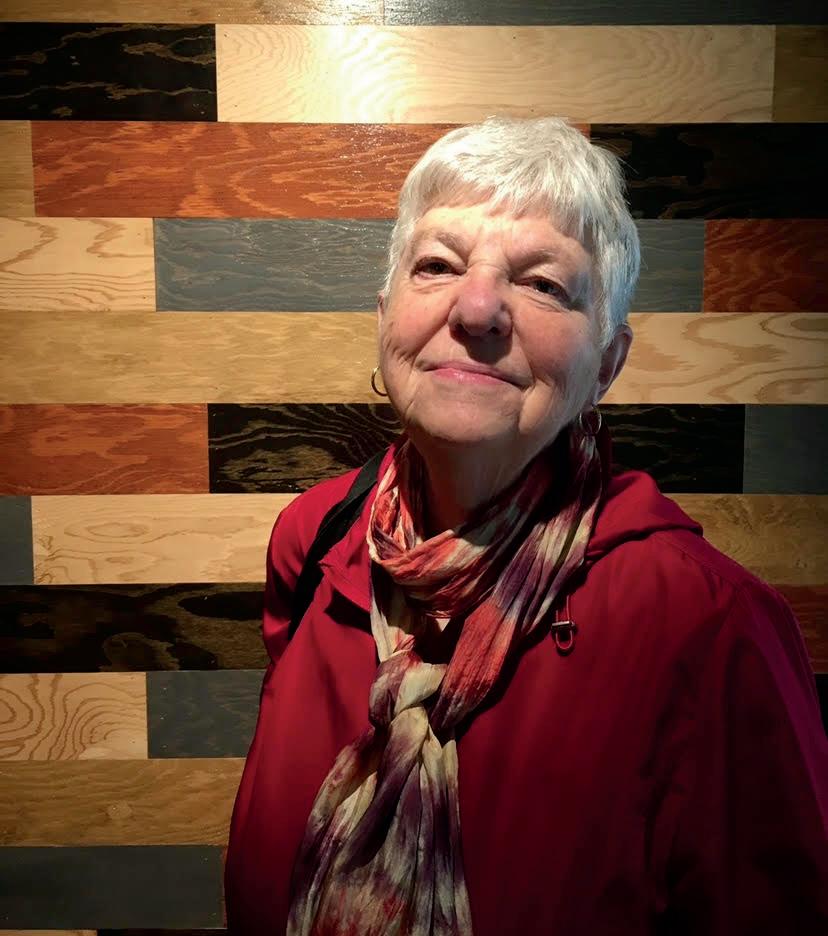
21 In Memoriam
marioncasson.com
Local music ensembles surviving the pandemic

The Quinte region




has a rich history of community-based music groups. These ensembles bring musicians of all ages and backgrounds together to share the joy of musicmaking for their communities. Bands like The Commodores’ Orchestra have been entertaining Quinte residents for nearly a hundred years.
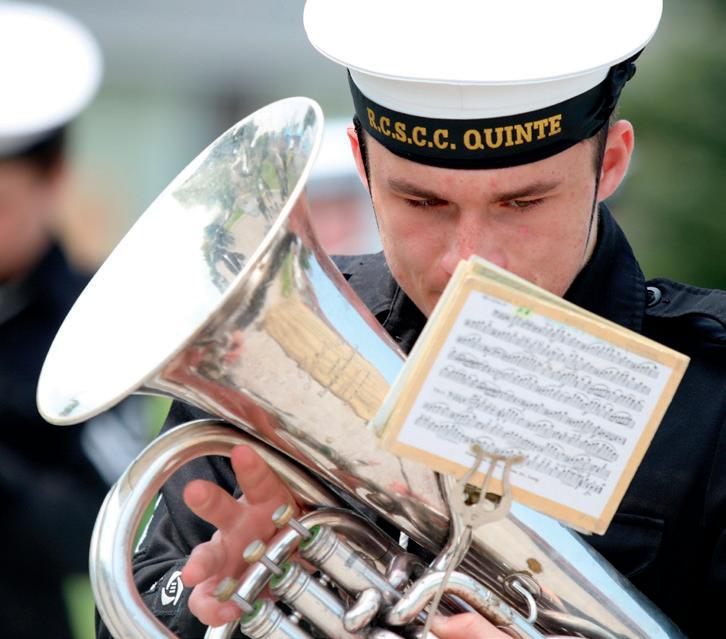
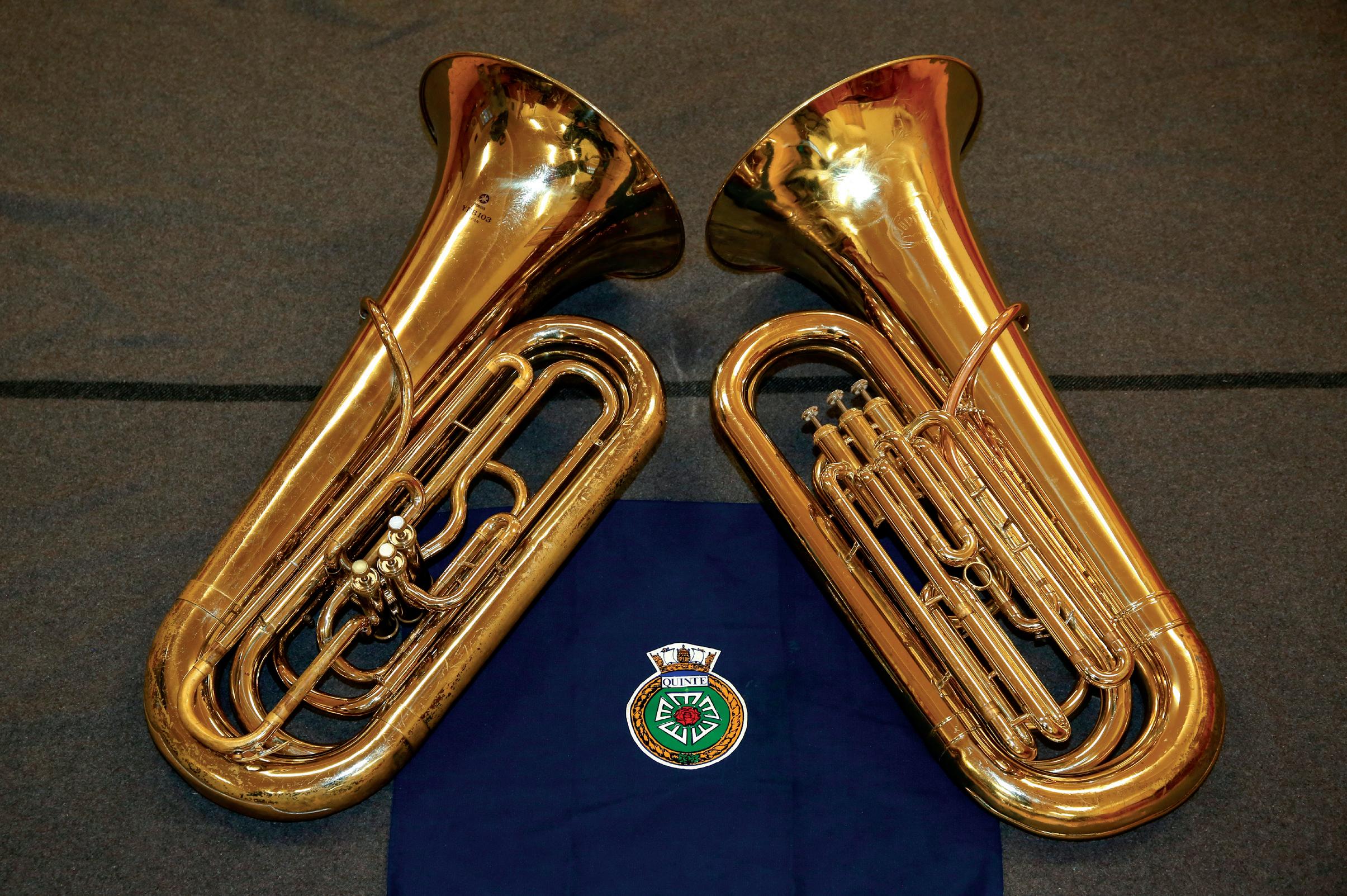 By Scott Mills
By Scott Mills
In early 2020 when the pandemic hit, seemingly overnight, all rehearsals and performances were cancelled, with no end in sight.
Terry Denyes (pictured below), music director of the Brighton All-Star Band relates, "The Pandemic completely shut down our ability to rehearse and perform. Our normal rehearsal space is still

unavailable, making us scramble to find suitable accommodations. We do have a full slate of engagements booked for this season and I believe we will weather this storm and carry on for years to come.”
Music groups were shut down during the pandemic due to both health regulations and a lack of access to their traditional venues. That continues to be an issue for
22 Music
Belleville
Terry and Nadia, Brighton All-Star Band Andy Sparling
some groups such as The 8 Wing Concert Band, The Albert College Community Winds, and The Commodores’ Orchestra.
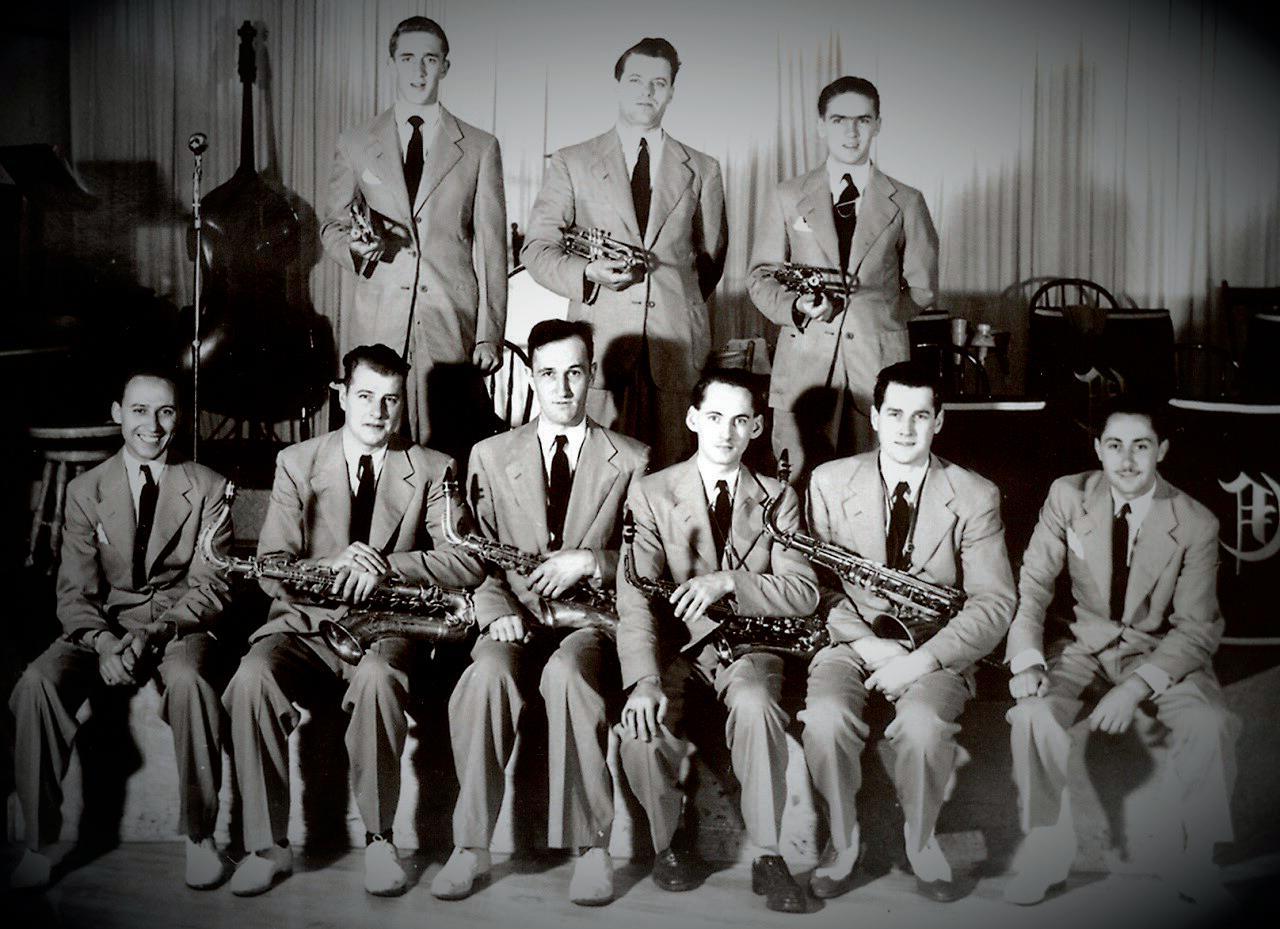
Other groups have found new options as restrictions have started to lift. The Belleville Concert Band moved into a shared space with the RCSCC Quinte Navy Cadet Band. The Trenton Citizen’s Band found a new home at the Church of Jesus Christ of Latter-day Saints in Trenton, and the Brighton All Star Band is using the Brighton Legion and Trinity St Andrew's Church.
The Belleville Concert Band and the Trenton Citizen’s Band worked together on a Christmas show, with the Trenton Band producing DVDs and song sheets of Christmas music that were sent to seniors’ homes. Technology also helped keep the music alive. The Quinte Symphony and the Trenton Citizen’s Band created music using online software for remote-collaborative performances, or to share recordings for individual rehearsal purposes.
Two years later, musicians are safely getting back together, back to weekly rehearsals, making a return to performing, are planning for new shows and hope to be fully back up to speed by September.
President of Quinte Symphony, Debbie Shaw, says, “Based on the enthusiastic response from our musicians, I think we are stronger than ever. I had to laugh when I saw our musicians gathered and ready to play more than 30 minutes before the start time of rehearsal after 18 months of waiting!”
Andy Seguire, music director of Albert College Community Winds, says their ensemble offers a unique opportunity for students and adults to collaborate. “Will it look exactly the same? Likely not, as most things may take on a different feel as we move out of the pandemic,” he
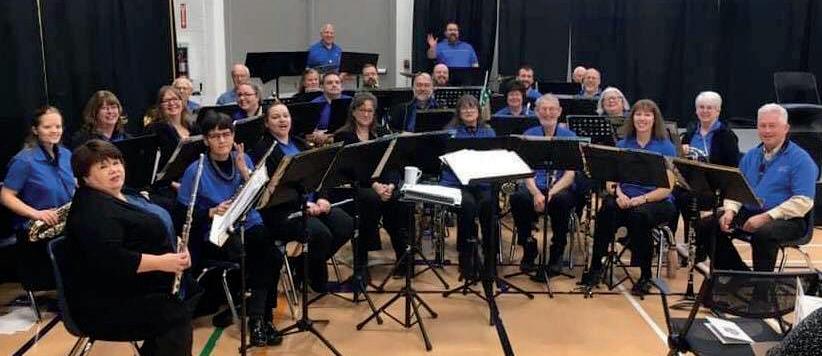
says. “However, the spirit and mission of the band will stay the same; providing the space for students and community members to come together and play purely for the joy of doing so.”
All groups are recruiting new members and encouraging interested musicians to join them and become part of this region’s long music-making tradition.
To quote the Quinte Symphony’s motto, you are encouraged to come to the performances to hear “The music you love played by the people you know.”
23
Music
Belleville Concert Band
Bringing jazz to downtown Belleville
 By Peter Paylor Pablo Terry (Sol de Cuba)
By Peter Paylor Pablo Terry (Sol de Cuba)
about it. My goal is to add to Belleville’s cultural landscape, and to help grow the city as a tourist destination.”
The festival is scheduled to run from September 2nd-4th in downtown Belleville with more than 30 musicians playing on four main stagesBernice Parrott Stage in Market Square, Belleville Club, John M. Parrott Gallery, and along a stretch of Front Street. “They’re all walkable,” says Rees. “It’s a different kind of experience than having to get in your car and drive from place to place.” Many restaurants are also hosting live jazz during dinner hours. Sponsors include Bay of Quinte Tourism, Quinte Arts Council, Bay Mazda, Long & McQuade, City of Belleville, Karlo Estates, and Lakeland Multi-Trade in Cobourg.

Rees started playing piano at five, finished the conservatory program at twelve, and soon after joined a rhythm & blues group that played at school dances. He was introduced to jazz by listening to a friend’s older sister’s record collection. He started going to jazz clubs in Toronto as a teen. “What drew me to it, I think, at the beginning, was the fact that everyone on stage looked like they were having so much fun.”
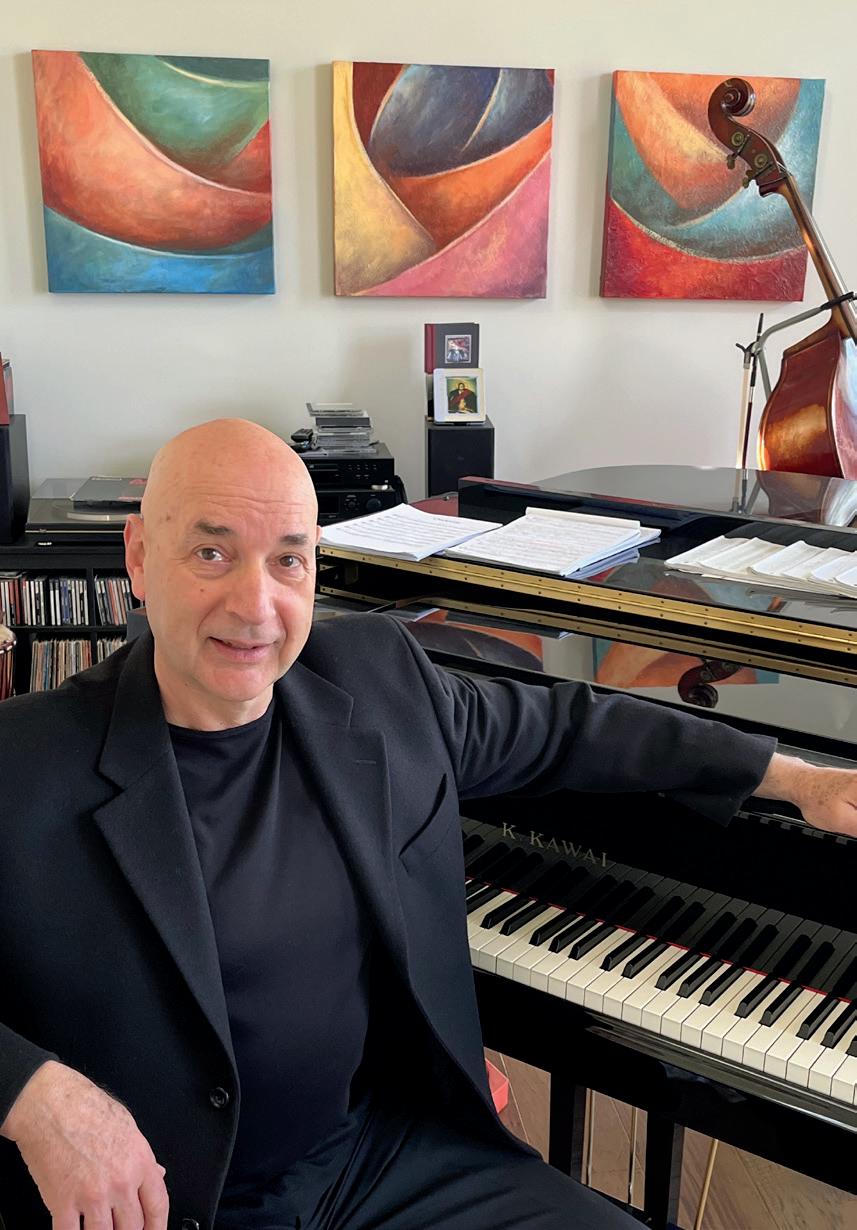
24 Music
Howard Rees
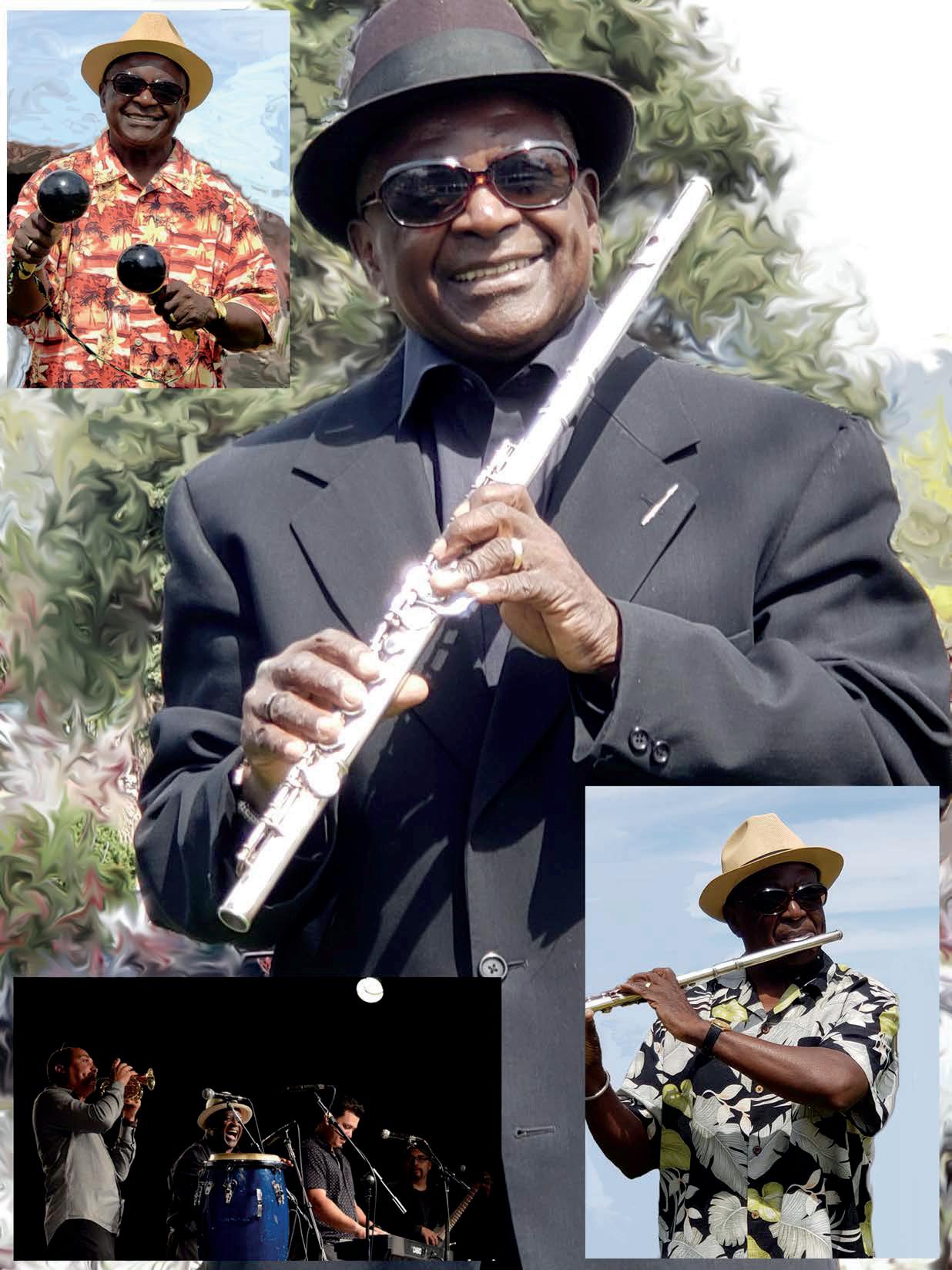


25 Music
Sol de Cuba
Chris McKhool
Jane Bunnett
Echoes of tradition
By Greg Ceci Music
K anyen’kehá heritage and
traditions forge Jennifer Brant's music, songwriting and personal journeys. Jennifer still resides on the family farm in Tyendinaga Mohawk Territory and as a girl, milking cows, farm chores, harvesting sap and prepping fields filled her days. Sundays were a day of learning, rest and music with family and friends.
Traditions were instilled early, learning social songs with the Quinte Mohawk Singers and Dancers while elders shared time-honoured tales and taught skills like beading and leather crafts. Her musical indoctrination was her Father's doing. Brant muses, “Dad had an old Kay guitar he’d strum - he would get me to sing "Roses Are Red" and Grandpa would play "You Are My Sunshine" on a lap steel.”
At eight, her parents gifted her a Bontempi organ. At nineteen she learned guitar and later bass but her instrument of choice was always her voice. Earliest influences came from albums and the barn radio as Brant sang along to Johnny Cash, Herb Alpert and Charlie Pride while fulfilling farm duties. Brant remarked, “In elementary school, I participated in music lessons, choir, and Kanyen’keha music and dancing. When I was twenty, both my Dad's trio and the Napanee Old Time Fiddlers invited me to sing - from there I attended open mics to learn my craft.”
Her parents built a hall for monthly music events and a yearly festival called "Just Past The Pines Jamboree". Jen's focus shifted to writing and performing her own material soon after encouragement from Bernie Dobbin. It was sound advice as Brant has since released two CDs and still performs "Promises Of Love" - one of her first songs.
She also began to share and hone her skills with influential local songwriters Bob McQuaid, Stephen Medd and Lynn and Brittany Brant. When asked about songwriting she remarked, “I have an idea in my head and I start singing.



26
Jennifer Brant Tyendinaga
Now, I grab my phone and make a recording with a voice memo but before cell phones when I got an idea for "Old Slash Road", I'd sing and then pull over and write - it was a long drive home. Other times I let the idea sit for a day or two then grab my guitar and work it out.”
Some songs Brant has penned include "Two Lovers", a song about their creation story, "Keep Our Water Clean" told from the perspective of the fish, and "Testani-Turn it Around" outlines the principles of peace and working together. Her latest song "It's Wintertime Again" is a time to pass on folklore about how we impact the Earth.
Brant continues to teach in her community, write songs and perform with husband Kieran and her band Mustang but traditions are lifelong echoes.
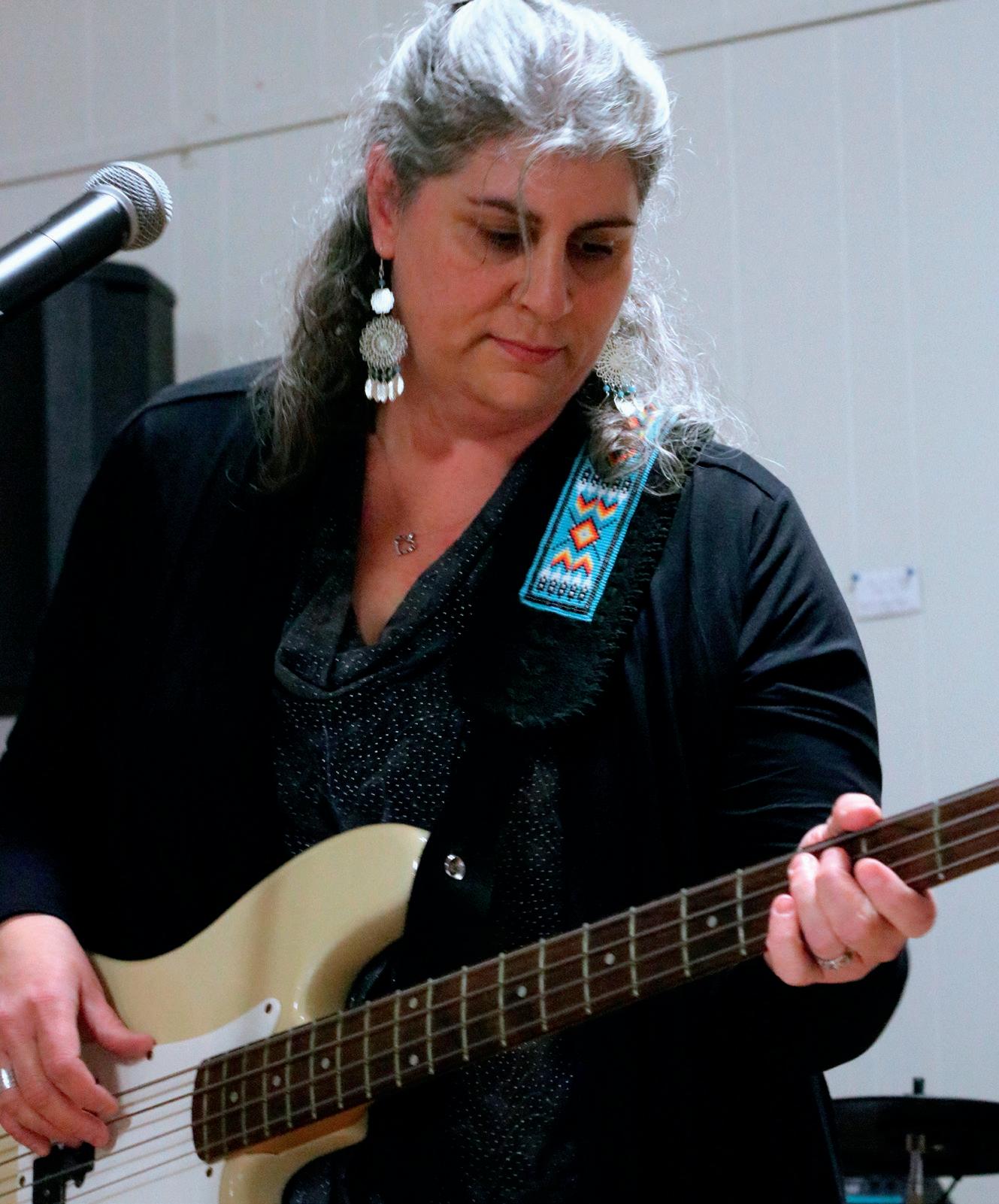
“The more I understand of our Kanyen’kehaka culture - it affects my perspective and songwriting. The Earth is our mother and we have a relationship and responsibility with all of creation.”
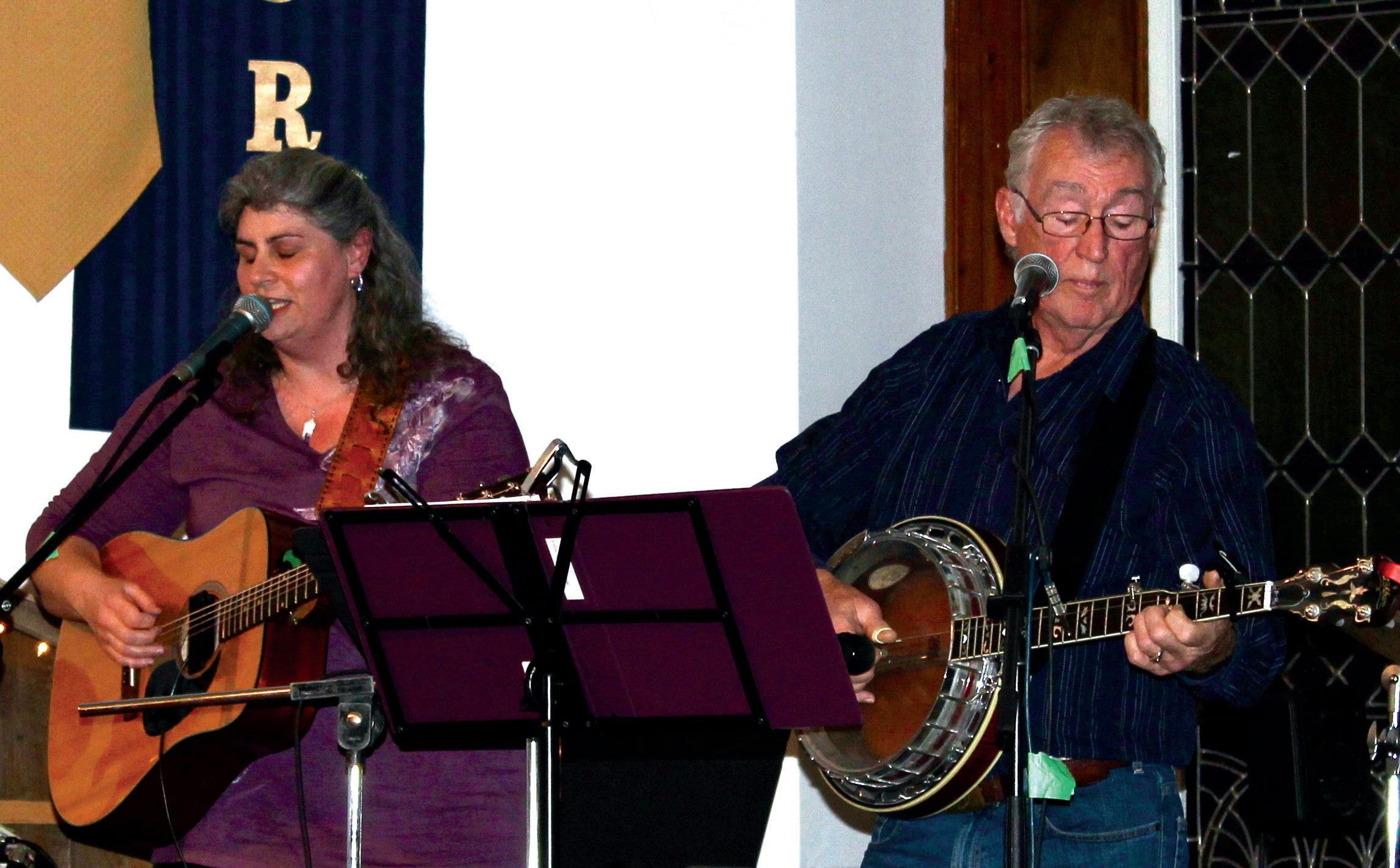
Music 27
Hometown comedian wins Toronto sketch comedy competition
 By Peter Paylor
By Peter Paylor
Kyle Woolven is a Belleville comedian who now does most of his comedy online. His video, “Buys Houses,” recently won the Toronto Sketch Comedy Competition. His “Welcome to Belleville” video is approaching 150,000 views on YouTube.
 Belleville
Belleville
“I grew up here,” Woolven says. “I was born and raised in Belleville. People used to tell me you should be a stand-up comedian when you grow up and I took that somehow as an insult, which is weird, like I thought somehow that was just them saying ‘you’re just the funny guy.’ I didn’t think being a comedian was a viable career.”
He later realized he loved writing and envisioned working for television. “I knew I had to do something, so I went to university - Carleton University - to study English. I still had no clue what I wanted to do. I knew I didn’t want to work at some job doing the exact same thing every day. That scared me to death.”
Woolven auditioned for the Comedy Program at Humber College. “My first time doing stand-up was for two people to get into the program. Performing in front of two people is not much fun. It’s better with a crowd. That was my ‘aha’ moment. I realized that this is definitely what I want to do with my life. I enjoyed it so much. I felt so comfortable.” Woolven was twenty-one at the time and living in Toronto. He started doing standup and writing and performing sketch comedy. He got an agent.
When life led Woolven back to Belleville, he pitched Loyalist College the idea of a comedy course, and they hired him. He took that course to Durham College where he now
28 Literary
teaches students about Canadian comedy, the career path, and why it matters.

“I would actually teach in my course that the right way to get anywhere is to just do it yourself and create your own content and I wasn’t even doing that, even though I was teaching it and so I realized I needed to start creating things. Once I started creating content, I realized I’m lucky to be in this position where I can make money doing something I love doing. I can pursue and devote time and I get to do things that are purely my vision, and I don’t have anyone interfering or telling me what I can or can’t do.”
“It’s very nice to be appreciated locally, to be considered an artist for the work that I’m doing,” Woolven says. “Any time people tell me that they thought my video was funny or made them laugh… it never gets old hearing that.”
Even though Woolven has been making people laugh all his life “it’s still the number one compliment anyone can give me.” He says, “I’m extremely grateful and thankful for the people in Belleville tuning in to my videos and letting me know that they’re enjoying them, because it’s been a life-changer for me. I feel very lucky to be here and be able to do what I do.”
YT: Kyle Woolven IG: @KyleWoolven
Twitter: @KyleWoolven1

29 Literary
Writers find inspiration at Roblin Lake
By Jennifer Shea
TheAl Purdy A-frame
Association’s Writer-in-Residence Program is welcoming the latest group of writers to the property. Selected Canadian writers are able to spend anywhere from two to twelve weeks residing and working in the A-frame house that was built, and inhabited, by Canadian poet Al Purdy and his wife, Eurithe. Since the program launched in 2014, 36 writers have participated.
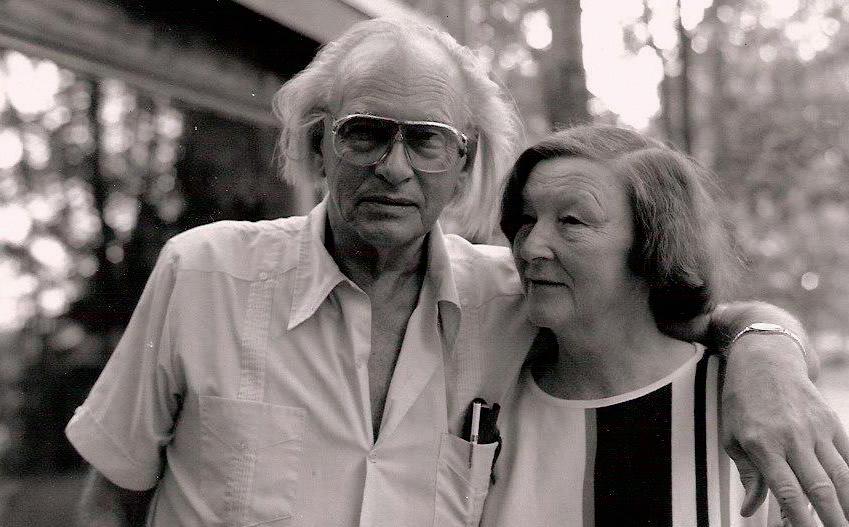
“There are only a handful of houses in the whole country that are literary houses that function as residency programs,” says Jean Baird, president of the Al Purdy A-frame Association. “The only two where the writer actually lived, and wrote, in the house are the Purdy House and the Haig Brown House in Campbell River. It’s a very special experience.”
Poet Daniel Lockhart (pictured left), who began his residency in April, agrees. “From southwestern Ontario, you dream about spending time in places like this. It’s calm, it’s quiet, it’s relaxing. The quality of air here is so much better. There’s a good energy that really feeds creation and almost happiness.”
“You can feel that there’s something different. There’s a way that you become centred here. That’s an attribute of the community, its people, and the place.”
Lockhart’s poetry typically focuses on decolonization, looking at mythologies and histories, and is rooted in ecological themes. He connected with Al Purdy’s poetry in that it spoke from the land and everyday people.

Lockhart’s residency project focused on the extensive communications between Al Purdy and other poets, particularly German-American poet, novelist, and short-story writer Charles Bukowski. Lockhart is working on a full-length collection of these communications. “Al was a much more awarded poet. He was much more highly regarded than Bukowski in the literary community. Bukowski was much more of an everyday man’s poet. It’s an interesting sort of flip-flop.”

Literary 30
Prince Edward County
Daniel Lockhart
Al Purdy
When Al and Eurithe purchased the Ameliasburgh property and started building the A-frame in 1957, Al considered himself a failed poet. “Within eight years of building that house and living there, he won his first Governor General’s Award,” says Baird. “He started writing out of the vernacular of the County and it shaped the development of his poetry in really significant ways.”
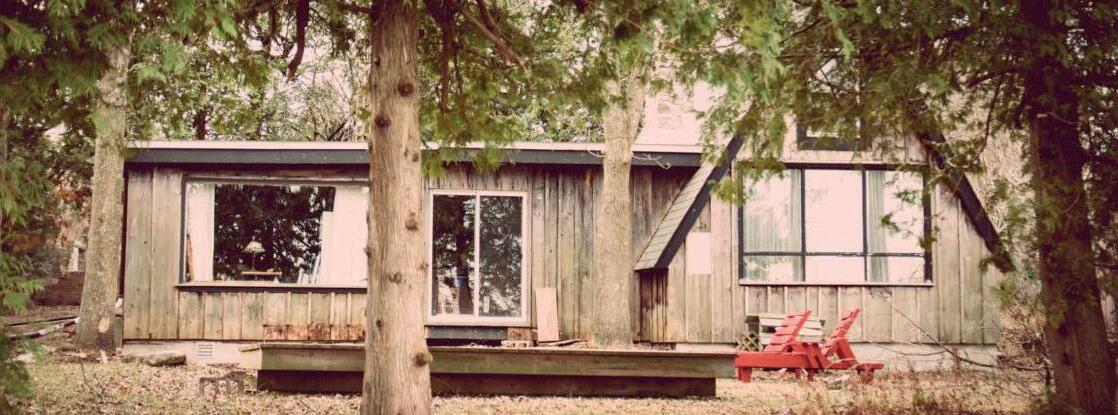
Writers-in-residence at the A-frame enjoy the property pretty much as it was when Al and Eurithe lived there. It has a certain magic that’s often commented upon. “You can definitely sense that there’s still traces of Al here,” says Lockhart. “You can feel it. You’re picking his books up. Your hands are touching the same things he touched. There’s no doubt that his spirit is here.”
Lockhart also noticed that the atmosphere sparked his creativity. “All of a sudden, out of the blue, you might snag a line of poetry or even prose. Usually, when I’m not in a place like this, it could come every four days. It comes every two or three hours here.”
This article is dedicated to the memory of Steven Heighton (August 14, 1961April 19, 2022).

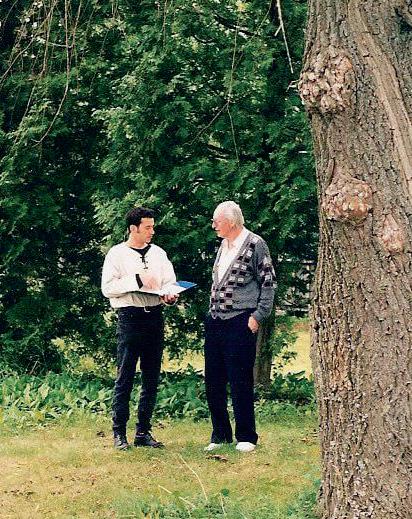
31 Literary
Steven Heighton and Al Purdy
Steven Heighton
A mining heritage custodian
By Ardith Racey Belleville
Give Dennis Newman
a snapshot of a building - especially one with historical significance or a connection with mining - and he will transform it into a pen and ink sketch. In fact, Newman, a resident of Belleville, has a collection of almost 2,500 original drawings that have been published in dozens of magazines, in books by awardwinning authors such as Michael Barnes and Denyes Chabot, and displayed in numerous provincial venues.
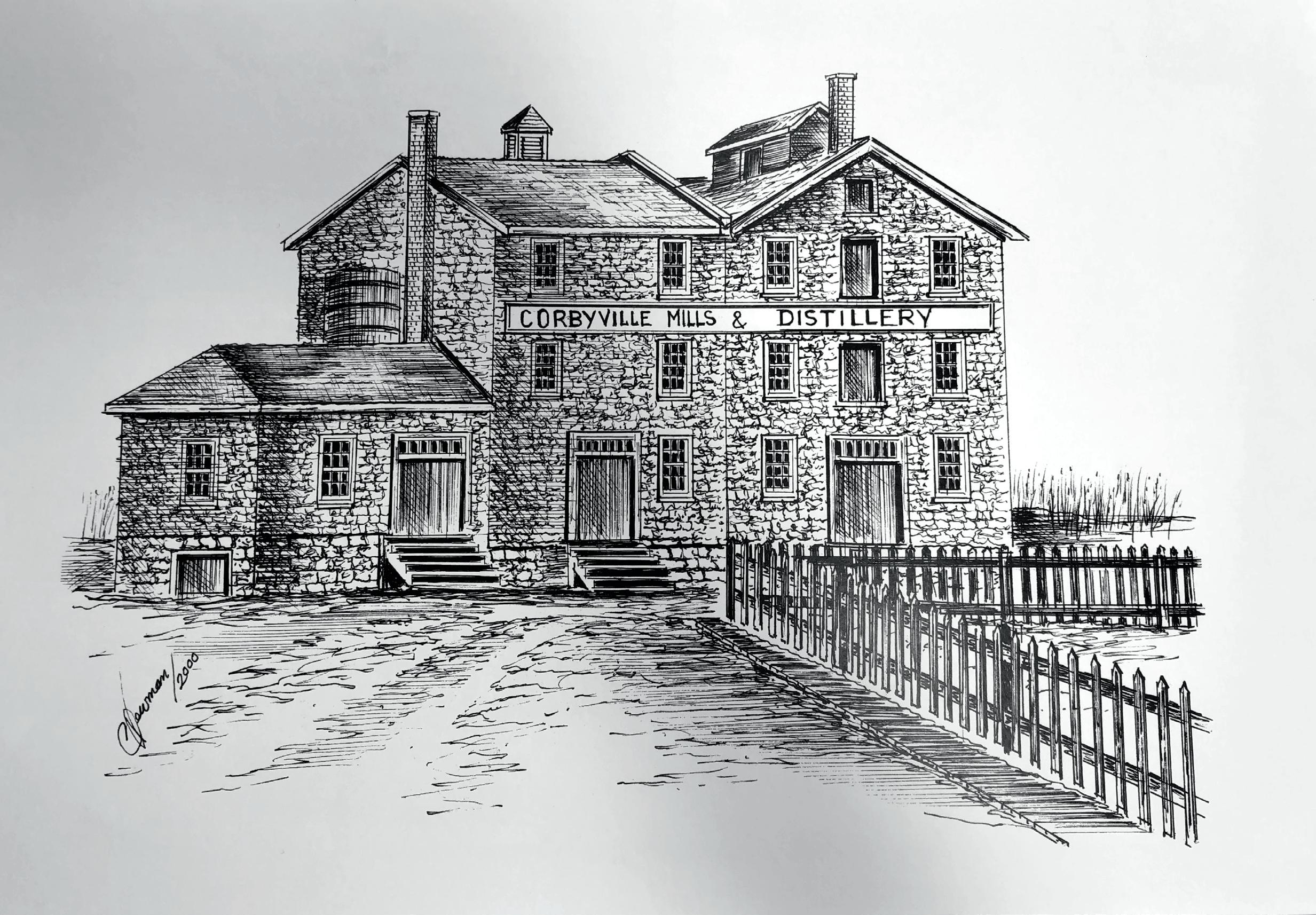
Newman sees his effort to “capture the essence and state of buildings, and in particular, the history of mining, as a way to respect history and allow it to say its story, as well as a way to honour the roles people have played.” His ‘heritage series’ of roughly 500 detailed drawings of mines, and mine-related subjects, chronicles the evolution of mining across every province and territory from 1860 to the present. He also has a passion for things renowned or unique, such as old churches, trains, and planes.
Newman grew up in Timmins during the Second World War and credits his upbringing for his passion for mines. His father was the Mine Captain at the Paymaster Mine where sixteen men perished in 1945 when “the cage went down,” and later became the Underground Superintendent at the Dome Mine.
School), that Newman took up sketching and re-discovered his love of mines. He claims not to view his work as ‘art’ or as a road to fame, but rather he is genuinely committed to fostering awareness of culture and history.
Although mines and mining were important aspects of Newman’s early life, it was not until 1997, after a long career of teaching at the Ontario School for the Deaf (now Sir James Whitney
That is not to say Newman’s drawings do not have artistic merit. His focus on precise details, perspective, and use of images that have faded or been lost, capture the essence of places and structures in a manner that is quite remarkable. He speaks of mines such as INCO and Falconbridge like lost loves, and notes that “once a mine ceases operation, the company must legally turn back the land to the way it was. My pictures provide images of what used to be and that’s so important for future generations.” In fact, his collection itself is overwhelming in terms of volume and range and is a testament to a life’s work that is chiefly concerned with heritage.
32
Heritage
“My pictures provide images of what used to be and that’s so important for future generations.”
Newman is hopeful that his work will continue to be valued, and that he can leave a legacy. He is currently looking for assistance to “facilitate an awareness of what I do and make people more aware of history” through the creation of an archive of his original pieces, as well as an online presence. An engaging speaker, he also welcomes opportunities to showcase his sketches or to educate people about the history of mines, and he is open to commissions.



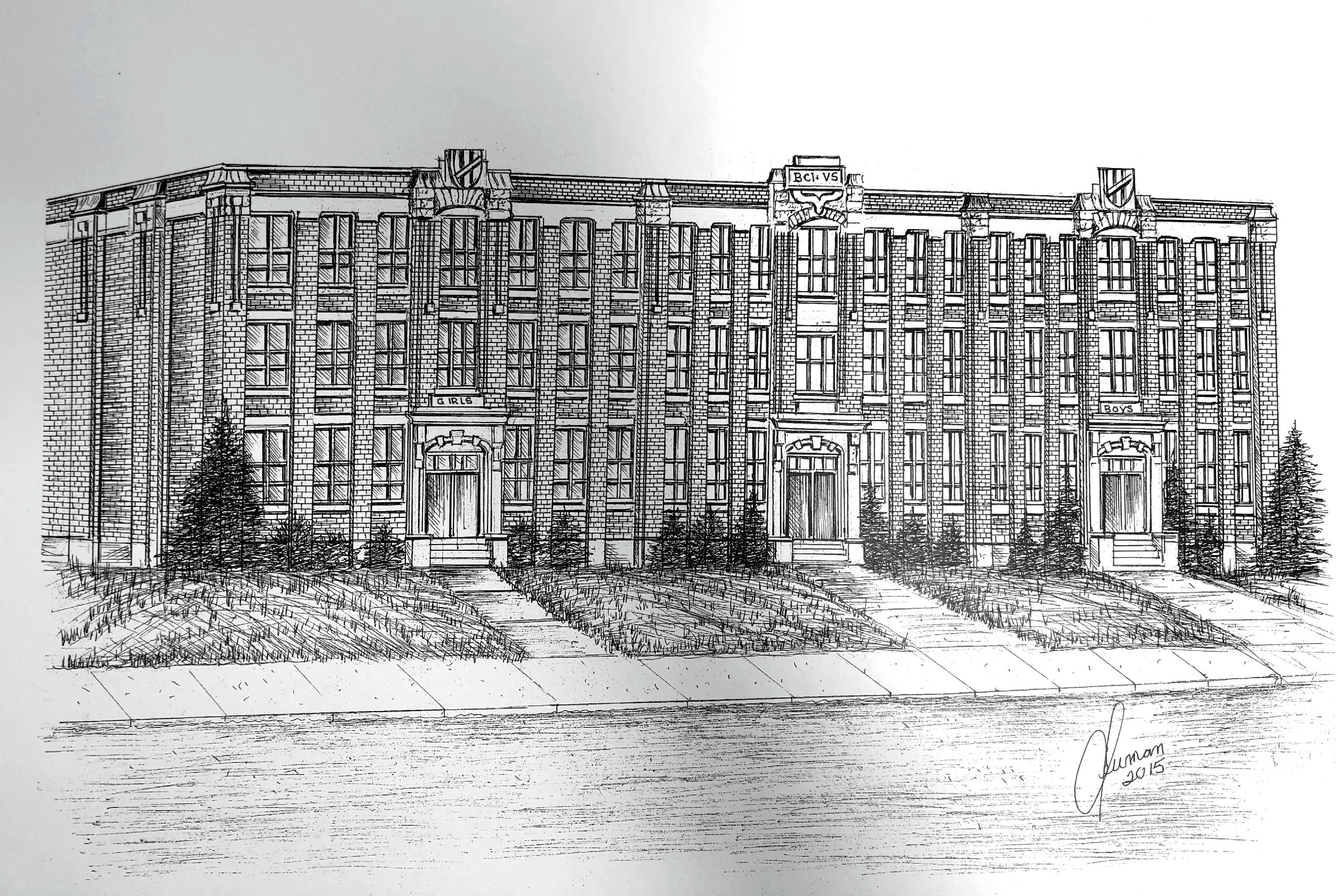
33
Heritage
Preserving the past with ink & paint
By Ardith Racey
WhenGeorge Kratz
bought his property south of Stirling, in 1989, he had no idea that he would be an author and visual artist whose work was recently showcased at the Parrott Gallery in Belleville. A commercial freelancer who designed logos in Toronto
in the ’60s and ’70s, Kratz credits the “beauty of Hastings County,” and a “fascination with beautiful, old buildings that are now falling apart” as catalysts for his foray into sketching hundreds of mills, bridges, canals, old barns, and houses over the past twenty years.

His recent show at the Parrott Gallery in February and March was, according to him, accidental. He went to see a show there and happened to meet the curator who asked if he’d consider having a show after she saw his copy of Into the Woods, a self-published compilation of his work. Given that much of his recent work is abstract, he never tried to sell or promote it locally.
Yet, what is unique about Kratz’s work is the dichotomy between realism and abstraction. Many of his works, especially the ones that describe views of trees and swamps, are photograph-like. That is in strong contrast to others which are intensely colourful, fanciful, symbolic abstractions, often inspired by animals, that have an element of animation, a quality carried over from his days as a commercial artist.
Over the past year, Kratz self-published three books, two of which are available at local bookstores. Ontario’s Waterways, journeys into our past and beyond contains hundreds of coloured, pen and ink sketches which focus on waterways,

34
Stirling
Heritage
and the buildings found alongside them. The text, also written by Kratz, provides historical background and anecdotes about the area and speaks volumes about the necessity of preserving the past. Dwellings contains sketches and information about homes, barns, mines, and churches located in Hastings County and beyond. The sketches are truly amazing in terms of artistry and meticulous detail, which Kratz credits to “being at this game for a long time.”

Nor does he intend to stop. His extensive travels in South and Central America continue to influence his work, and he acknowledges that his Ukrainian heritage (mother’s side) will likely compel him to “contribute in some way.”
A volunteer of Hospice for ten years, he’s learned the value of good health, and his love for nature and animals is palpable. His favourite pastime is canoeing with his son in Algonquin Park.
He’s currently working on another book, and he gives art and piano lessons to two children who are Syrian refugees
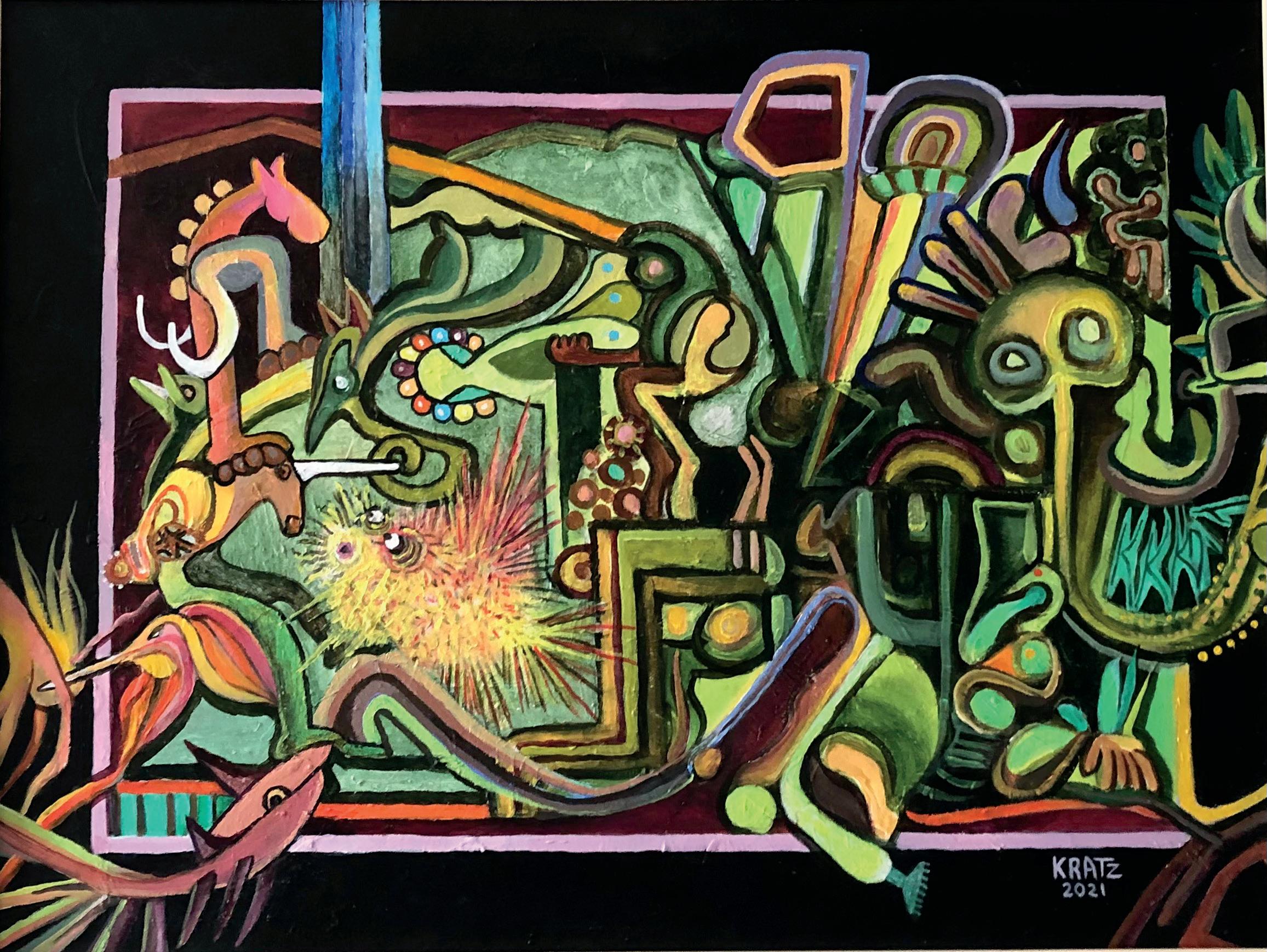
now living in Belleville, whose “enthusiasm and curiosity is something remarkable.” Kratz says, “you can waste time, or you can use it,” and he’s a shining example of someone who has no intention of wasting time.
He truly values life, good health, good friends, and the arts.
35 Heritage
Quinte en Plein Air
By The Quinte Arts Council
A fter a two-year hiatus, artists
from the Bay of Quinte region and surrounding areas, and as far away as the GTA and Quebec, joined in some much-needed fun in the 7th annual Quinte en Plein Air. This four-day event showcases art being created on the spot, “in the open air.”
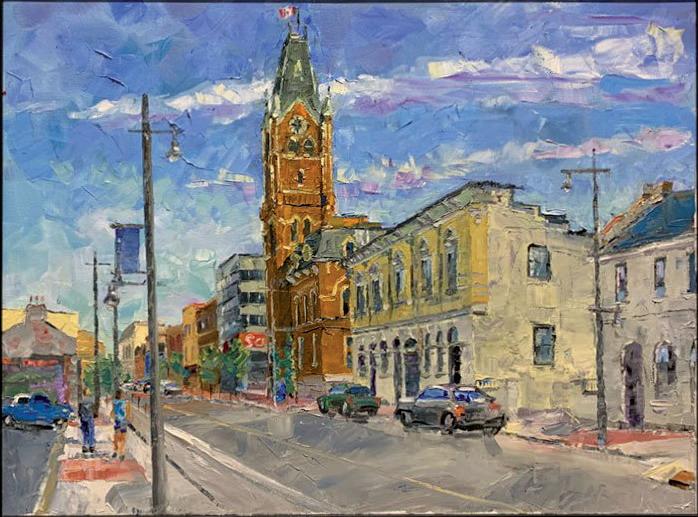
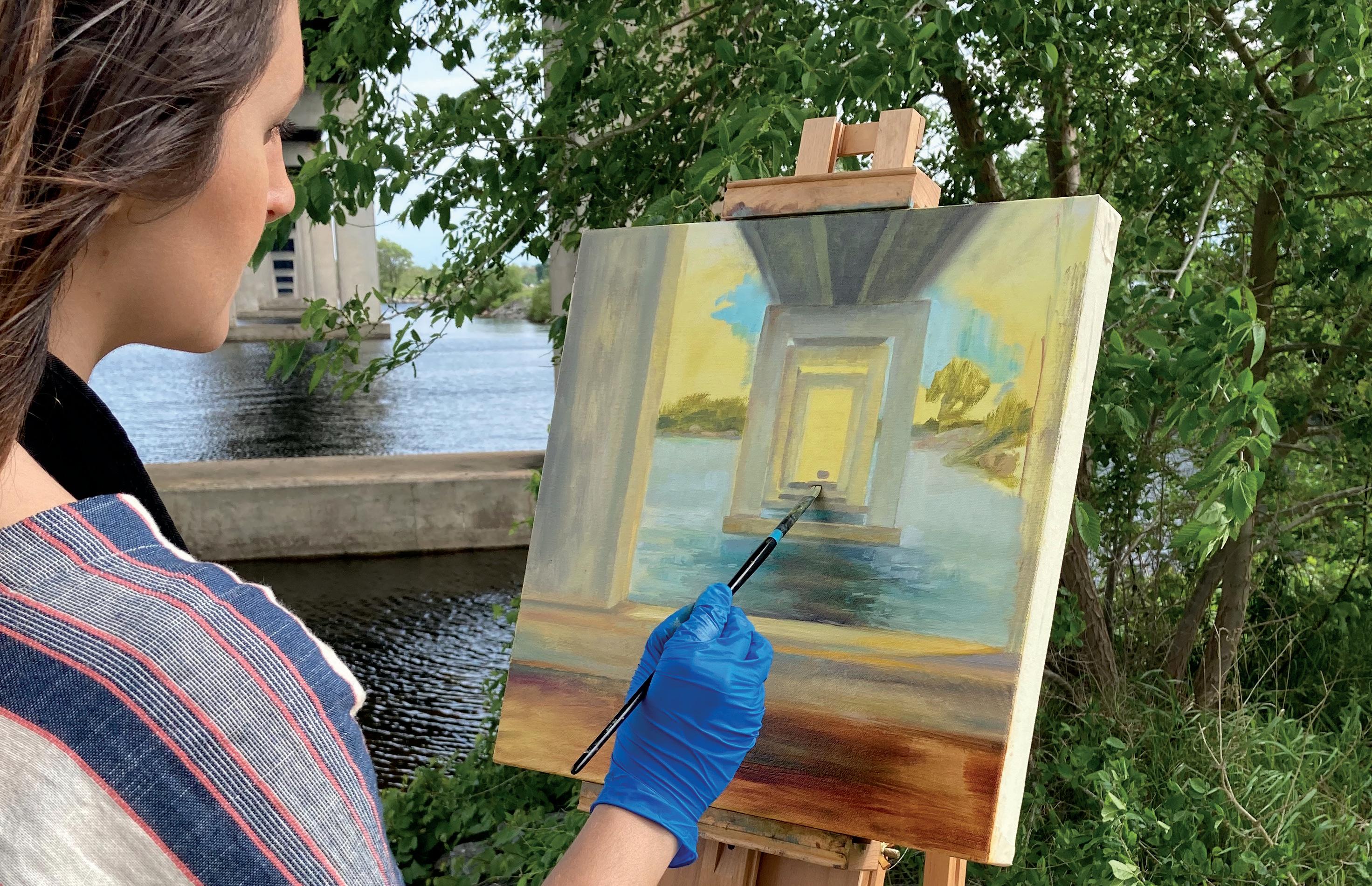
The event kicked off with the artists registering their canvases at Quinte Arts Council headquarters on May 26th. After a day of painting in the rain, artists joined the QAC team on Friday for light refreshments at the opening reception.

The sunny weather on Saturday brought artists out on location across the City of Belleville including many locations throughout the downtown core, Bay of Quinte waterfront, Victoria Park, Zwick’s Park, Myers Pier, Old East Hill, and more. Locals and visitors watched as the artists captured the beautiful views on canvas right before their eyes.
At Turtle Pond, QAC’s Communications and Media Director, Kodie Trahan-Guay, spotted Daniel Fobert painting the scenery from the perspective of the gazebo which happened to be occupied by fellow plein air artist Patrick McPhee, making the award-winning painting a plein air within plein air of sorts (pictured below).
36
Quinte Arts Council
On May 28th, artists brought their paintings to the J.M Parrott Gallery for juried selection, cash prizes, and a catered mix and mingle.
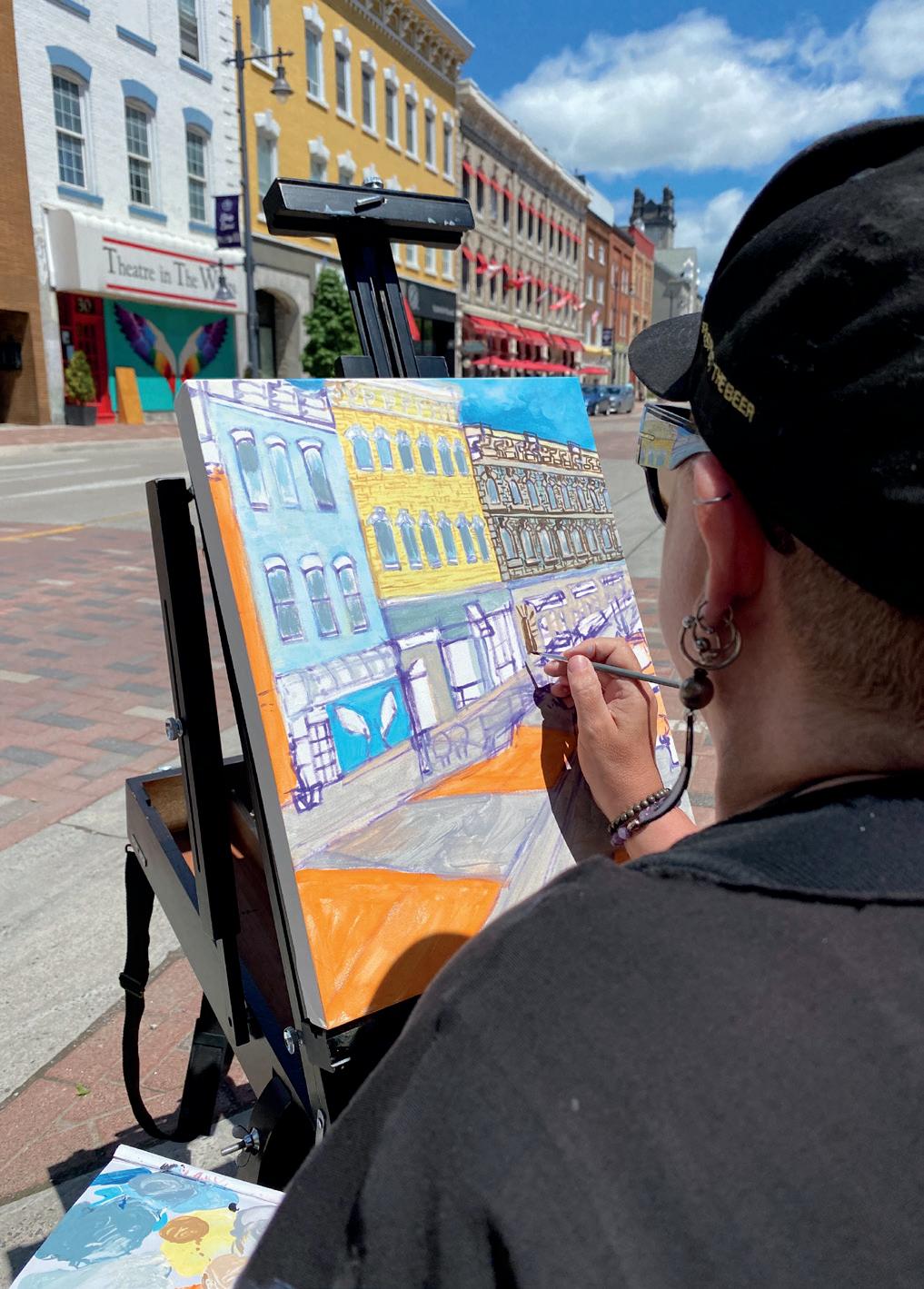
Awarded Paintings:
First Prize $1200:
Frank Cruzet "Bridge Street Church"
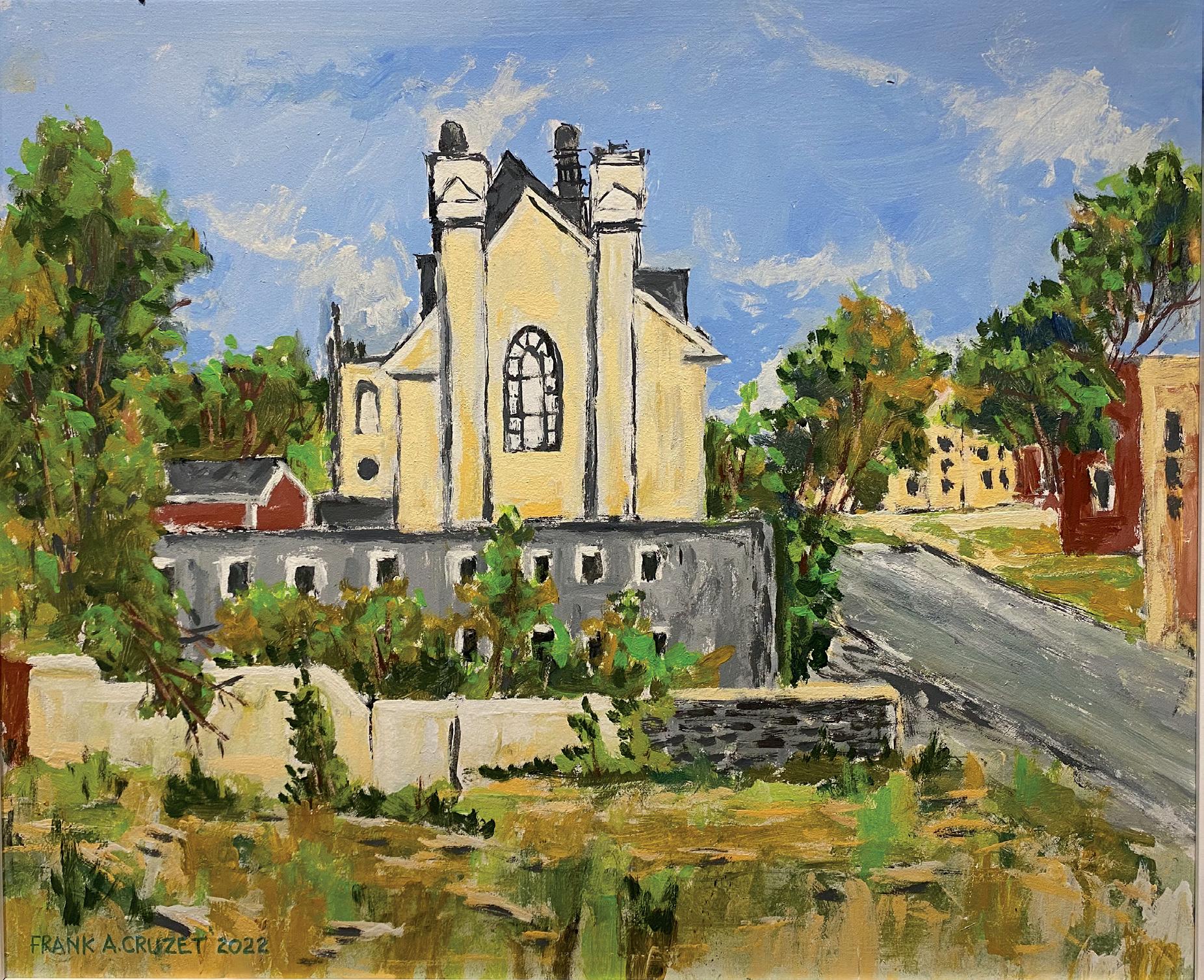
Second Prize $900:
Daniel Fobert "Downtown"
Third Prize $600:
Kishor Sonawane "Boat House"
Best Bay of Quinte Waterfront $500:
Daniel Fobert "Turtle Pond"
Best Downtown Belleville $500:

Hasibush Shaheed "City Hall from Victoria Park"
Mayor's Choice: $500
Yuriy Omelyanenko "Moira river delta"
Best Rural/Agricultural $250:
Jane Robertson "Grills Road Barn"
Best Architectural/Heritage $250:
Kishor Sonawan "Blue Day"
Best Student $200:
Zachary Generoso "Under the Rail Road"
People's Choice $150:
Teddy Asuncion "Waving Flags"
37
Quinte Arts Council
Celebrating Everyone Under the Rainbow
By Kodie Trahan-Guay/The Quinte Arts Council
In June, 2022, we celebrated the fourth annual Everyone Under the Rainbow Show. A time to embrace freedom of

identity and expression across the gender and sexuality spectrums and for allies to show their solidarity with those in the 2SLGBTQIA+ community.
Navigating out of the late stages of this pandemic and seeing changes to our creative ecosystems, we celebrated with the Quinte Pride theme of "Stayed in, Coming Out."
As part of the Ontario Trillium Foundation's commitment to diversity, equity, and inclusion, and in consultation with community members, the Quinte Arts Council (QAC) adopted the 2SLGBTQIA+ acronym to better reflect the identities and experiences of individuals in our communities.
According to the LGTBQ+ Danger Index for 2022, Canada ranked number one as the safest county for people in the
2SLGBTQIA+ community to live in and visit. Mexico ranks 50th on the danger index. Local artist Luisé Cisneros, a student at the Ontario College of Art and Design University, created an art installation focused on the dangers facing the 2SLGBTQIA+ community in Mexico.
“Mexico occupies second place in the world for the most homicides against trans or gender-diverse people. In Mexico, the LGBTQ+ community is protected by human rights bills, the constitution, and provincial policies - but the government hasn't done a great job of implementing systems that change the way of thinking of the majority of society. Toxic masculinity behaviour is integrated and fomented into society by these institutions and learned from childhood to adulthood, and passed through generations,” says Cisneros, whose interactive installation hung in the QAC gallery for the month of June.

38
Quinte Arts Council
Daniel Fobert, QAC member and artist, painted the artwork featured on the QAC 2022 Everyone Under the Rainbow poster and in the show. Fobert knows firsthand that Pride is a time when a community comes together.

“I went to Cape Coral Pride in March 2020. I stopped these total strangers in the street and asked them to pose for me and they kindly did. This year's Pride 2022 (March) in Cape Coral, I ran into them, in a huge crowd, and relayed to them that I painted them and now they are friends,” says Fobert about the couple featured in his artwork.
Everyone Under the Rainbow has taken place virtually over the past two years due to lockdowns but this year, with restrictions lifting, the show was in person, interactive and a great way to represent the 2SLGBTQIA+ community of the Quinte region and beyond.
“An inclusive and equitable culture of diversity is at the core of our mandate. The QAC believes the arts belong to everyone, of all ages and stages, race, sexual
orientation and gender, and our goal is to ensure diverse perspectives are represented and experienced through art. Our gallery provides the platform and empowers underrepresented voices to advocate for the value and necessity of all arts in our community - inclusion is

how we unleash the power of diversity and creativity.” says Janet Jarrell, QAC Executive Director.

39
Quinte Arts Council

Myrecent passion for sunsets and sunrises has become another way for me to balance out my photography. Working in my studio I can control the lighting and how long the sun stay's out. Nature is not so accommodating, and requires you to wait for that perfect moment.
I rarely shoot before the sun has dropped unless the story is big in the sky. This gives me that wonderful reflected light that bounces down to coat the water and skims the cloud tops. My captures can take from a second to over 2 minutes of exposure time. I am not really all about perfect technical images, but more mood and story. A common thread and style to my work and from mentors over the years.
My locations can vary but the Bay of Quinte at the lake house offers a beautiful spot to capture some amazing skies and a perfect end to the day. No sunset/sunrise will ever be the same - it's truly a one of a kind. So every night/morning you can be in the same spot and the story will be different. This, I think, is one of the most amazing things about shooting these images.
 Christopher Gentile
Christopher Gentile
Content created in collaboration with the Bay of Quinte Regional Marketing Board

























 By Kodie Trahan-Guay
By Kodie Trahan-Guay












































 By Janet Jarrell
By Janet Jarrell

 Erin Thomas, of Thomas Estevez Design in downtown Belleville, creates unique jewelry
Erin Thomas, of Thomas Estevez Design in downtown Belleville, creates unique jewelry



 By Lin Parkin
By Lin Parkin







 By Scott Mills
By Scott Mills



 By Peter Paylor Pablo Terry (Sol de Cuba)
By Peter Paylor Pablo Terry (Sol de Cuba)










 By Peter Paylor
By Peter Paylor
 Belleville
Belleville





























 Christopher Gentile
Christopher Gentile


